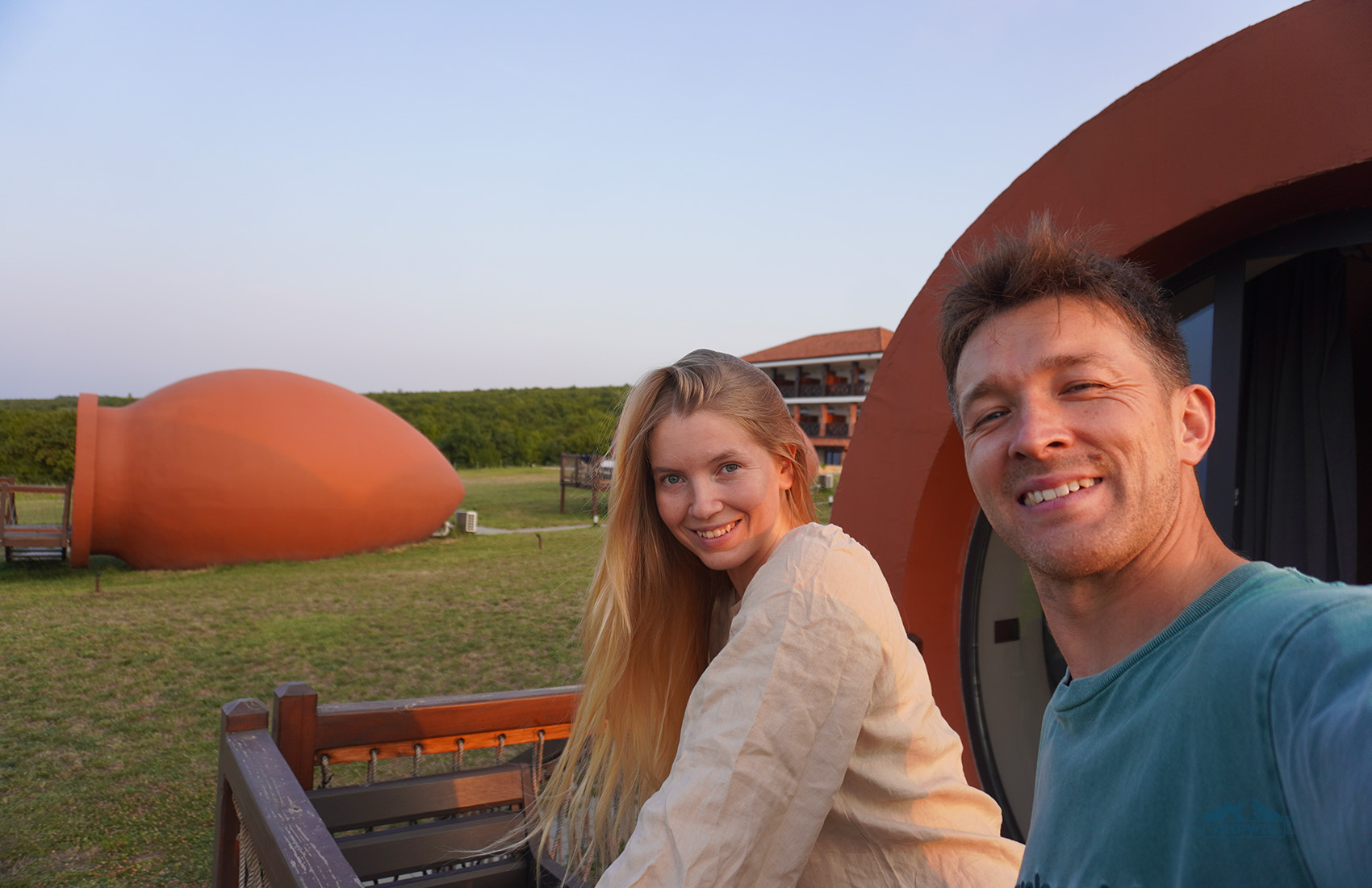
Tbilisi is nothing short of charming. But there’s so many gorgeous places hiding just outside of the city, within a 1-3 hour drive. The scenery may transform from snow-capped mountains and lush valleys to the cave cities and vineyards.
This summer in Georgia, we decided to rent a car and explore all of them. To enhance this post with photos and useful details, to add more places to our collection of beautiful corners of the world, and to help you plan fun and not exhausting day trips from Tbilisi or create a varied Georgia itinerary to keep yourself occupied.
Article contents
- Best ways to travel around Georgia
- My tips on doing daytrips from Tbilisi
● Kakheti — to taste Georgian wines
● Mtskheta — to visit the ancient churches
● Stepantsminda — to marvel at Mount Kazbegi
● Gori and Uplistsikhe — to learn about the past
● Borjomi — to take a sip of legendary water
● Kutaisi — to explore and the Imereti region
● Udzo Monastery — to do a hike within Tbilisi
● Armenia — to cross the border and peek inside
● Batumi — to try the best Adjarian khachapuri
● Rustavi — to look at the Soviet architecture
What day trips can you do from Tbilisi, Georgia?
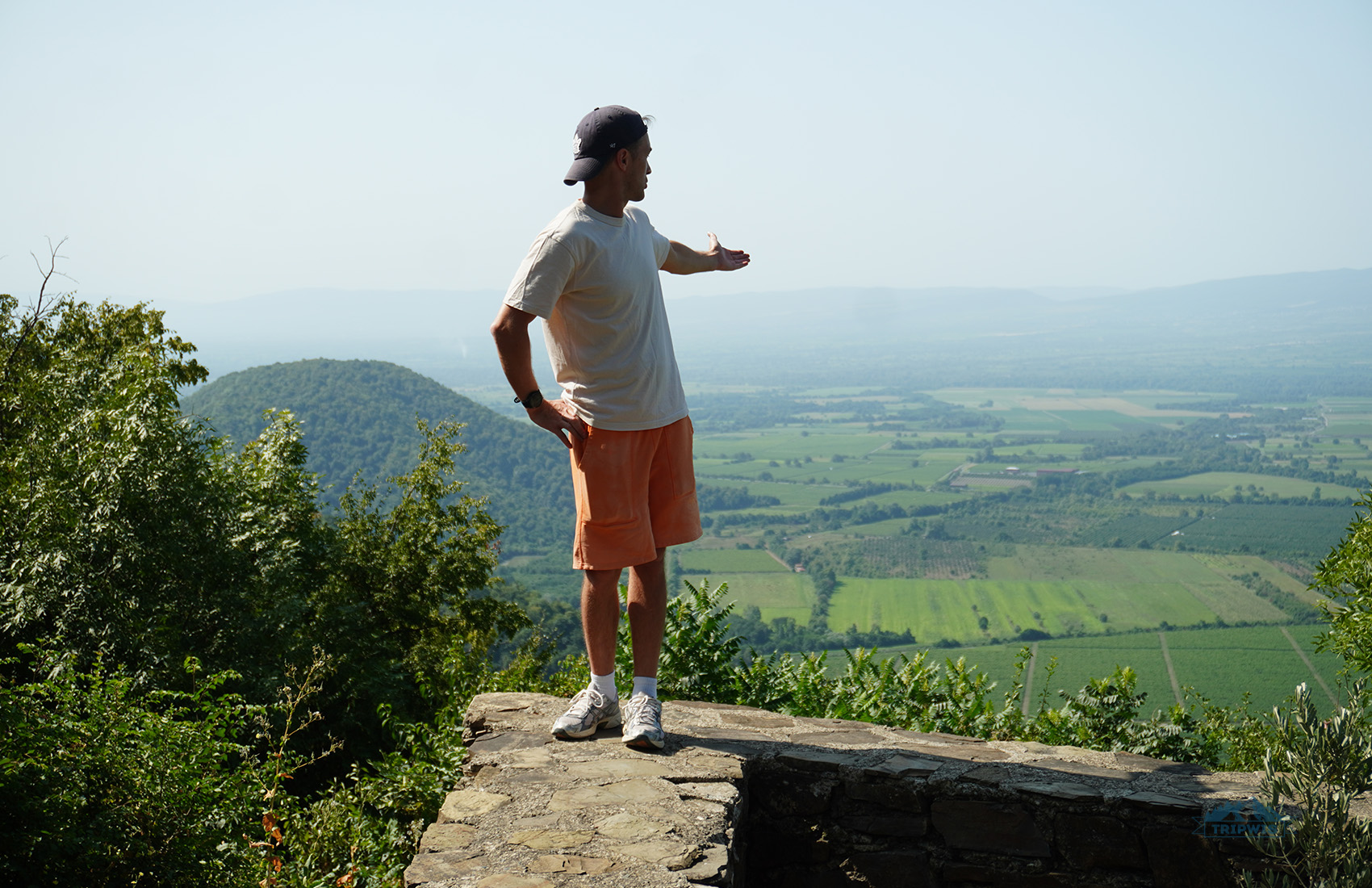
Tbilisi is a perfect starting point for day trips. Located almost in the middle of the country, it gives you an opportunity to experience a myriad of tailor-made activities and explore various destinations in Georgia:
- From diving deep into winemaking process in Kakheti to delving into the legends of Mtskheta’s monasteries,
- From debating the life of Stalin in Gori to reaching the Mount Kazbek that opens at the end of the Georgian Military Road,
- From detoxifying your liver in Borjomi to admiring the Brutalist architecture of the late Soviet era in Rustavi — you get the idea!
If you thought that a list of the best things to do in Tbilisi might be long… nothing could prepare you for the tally I’ve added up of the best day trips from the capital. It’s a doozy!
Best ways to travel around Georgia
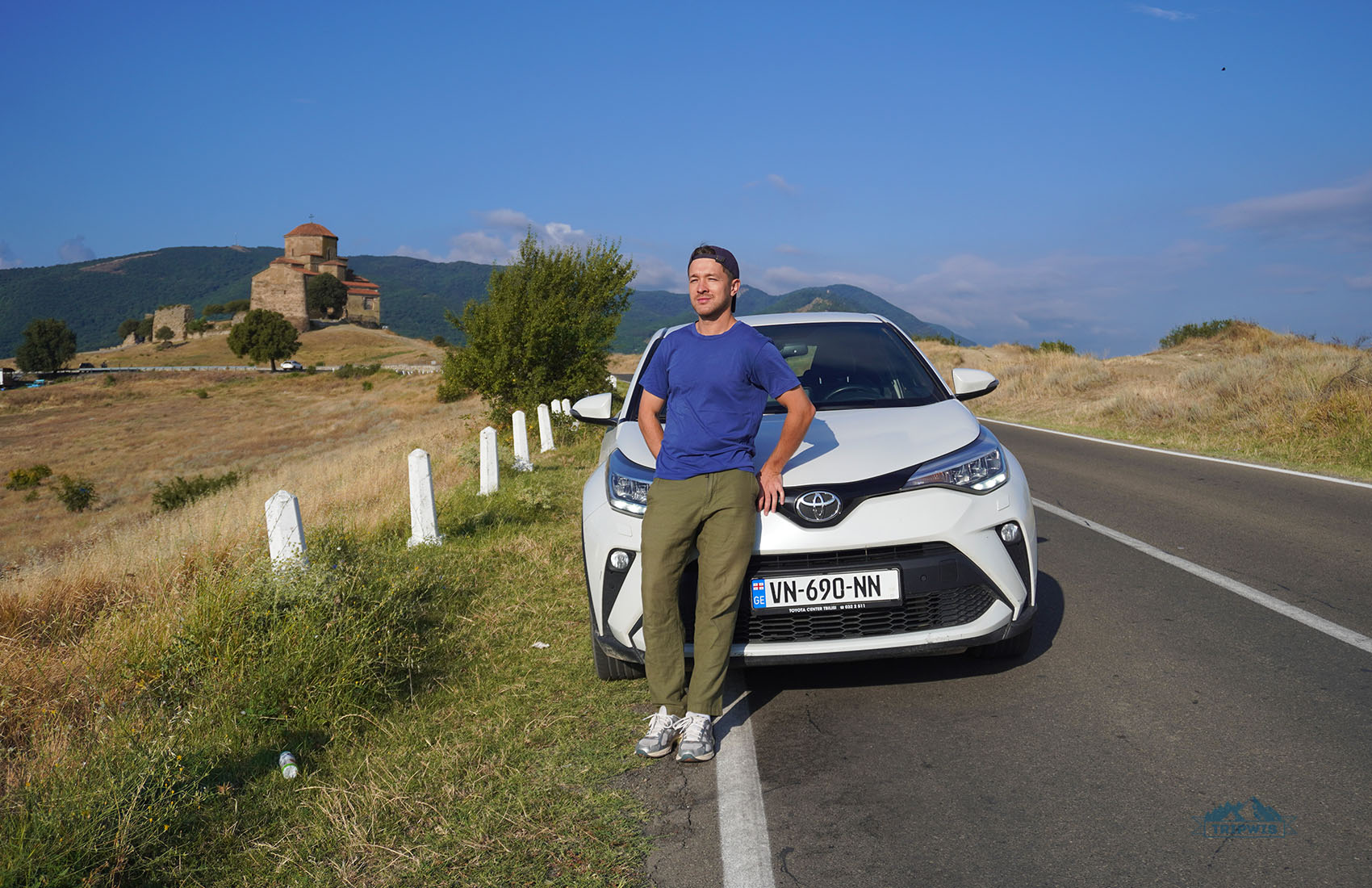
One thing before I get down to business — the question of transportation is paramount when planning such an itinerary. Thankfully, it is quite easy to make a day-trip tour from Tbilisi because there are many different ways to get out of the city:
- Public transport — perfect for budget travelers. A marshrutka (minibus) is the cheapest option, yet the schedule is unknown. A bus is a more comfortable choice, but it is less frequent. A train is also very nice and affordable, but it has limited directions.
- Taxi — no Bolt or Yandex apps will find you a driver eager to get you to Sighnaghi or Stepantsminda. You’ll have to work things out in person and negotiate the price.
- Car rental — the best way, in my opinion. It’s not the cheapest thing in Georgia (we spent $400 for 9 days + $120 on gas, and soon I’ll be posting an article on the challenges we experienced when renting a car in Tbilisi), but it gives you lots of freedom and comfort. I suggest you rent a car in Georgia via LocalRent — that’s what we used because this service had the most affordable prices and very transparent insurance terms.
- Guided tours — super popular with non-drivers and those who wants to indulge in the rivers of wine flowing in Kakheti. That’s the only place where my partner wished we were on a tour instead of driving (it’s all about wine tastings, after all!). Check out the tours on GetYourGuide or Viator.
Moving to our tried and tested list of the best day trips from Tbilisi. The key factors for making the cut were a variety of leisure activities and sightseeing to do, transport accessibility, distance from Tbilisi, and value for money. A couple of the trips are still on our to-do list (there’s just so much to see and do in Georgia!) and I cannot wait to make them happen.
1. Kakheti — to taste Georgian wines
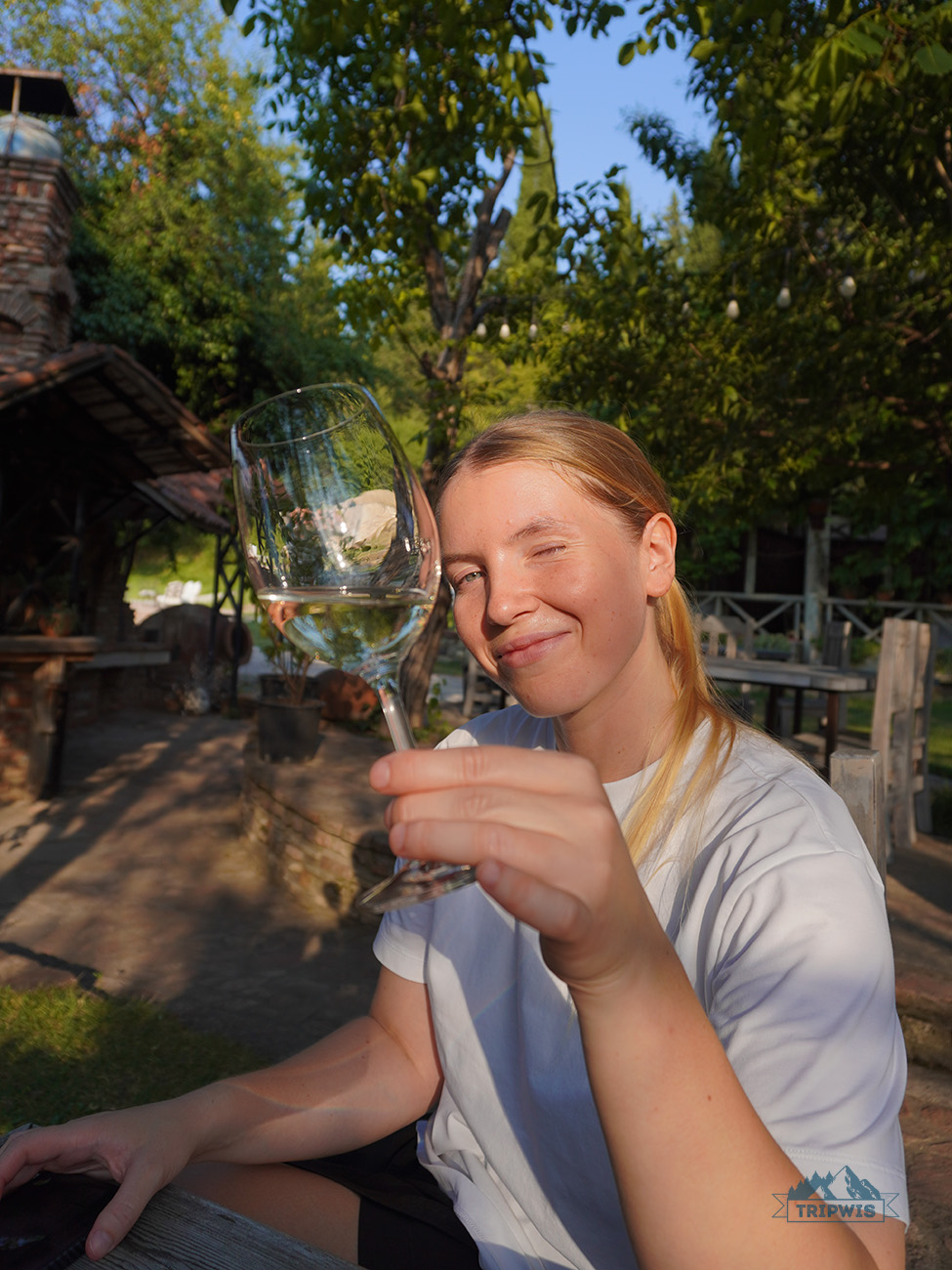 |
 |
🔹Three words about this trip: Wine, valleys, monasteries
🔹Distance from Tbilisi: 100 km / 62 mi
🔹Time in transit (one-way): under 2 hours
🔹Best way to get here: Guided tour (this one is the star on the aggregators)
🔹Can you combine it with smth else: Mmm…not really
Wine and everything wine-related are a few of the cornerstones of Georgian culture. After all, this is where wine production originated some 8,000 years ago (and not in France, contrary to popular belief!). Ancient wine-making method — qvevri — of using terracotta clay pots to produce and age wine is what makes Georgian vino so unique.
- Due to the variety of its eco-systems, from mountains to wide plains and waterfront destinations, Georgia has many distinct wine zones. I cover nine of them (and include plenty of notable wineries and vineyards) in my detailed guide here.
Kakheti is the largest wine region with atmospheric city of Telavi as its center. It sits closest to the Georgian capital, which explains the fact that arguably the most popular one-day trip from Tbilisi is to go to the Kakheti region.
Though obviously very wine-centric, there are many other attractions to see in the Kakheti region in Georgia. It still makes sense to go there even if you don’t drink!
Whether you are of sound belief in the “In vino veritas” lifestyle or you’re the designated sober driver, you will make some fun memories exploring the area:
Sighnaghi and its surroundings — a quaint historical town in Georgia’s Kakheti region, this one comes clad with authentic atmosphere, views over the Alazani Valley, backed by mountains, and all-around joie de vivre. The town is usually the second stop on your way from Tbilisi, and it doesn’t disappoint in the attractions department — from climbing and walking on top of the longest fortification wall in Georgia (4 km in length) to visiting the grounds of the Bodbe Monastery (which is the first stop and a final resting place of the female saint who converted Georgia to Christianity). Sighnaghi, also known as the City of Love, is a worthy stop on your tour of Kakheti region.
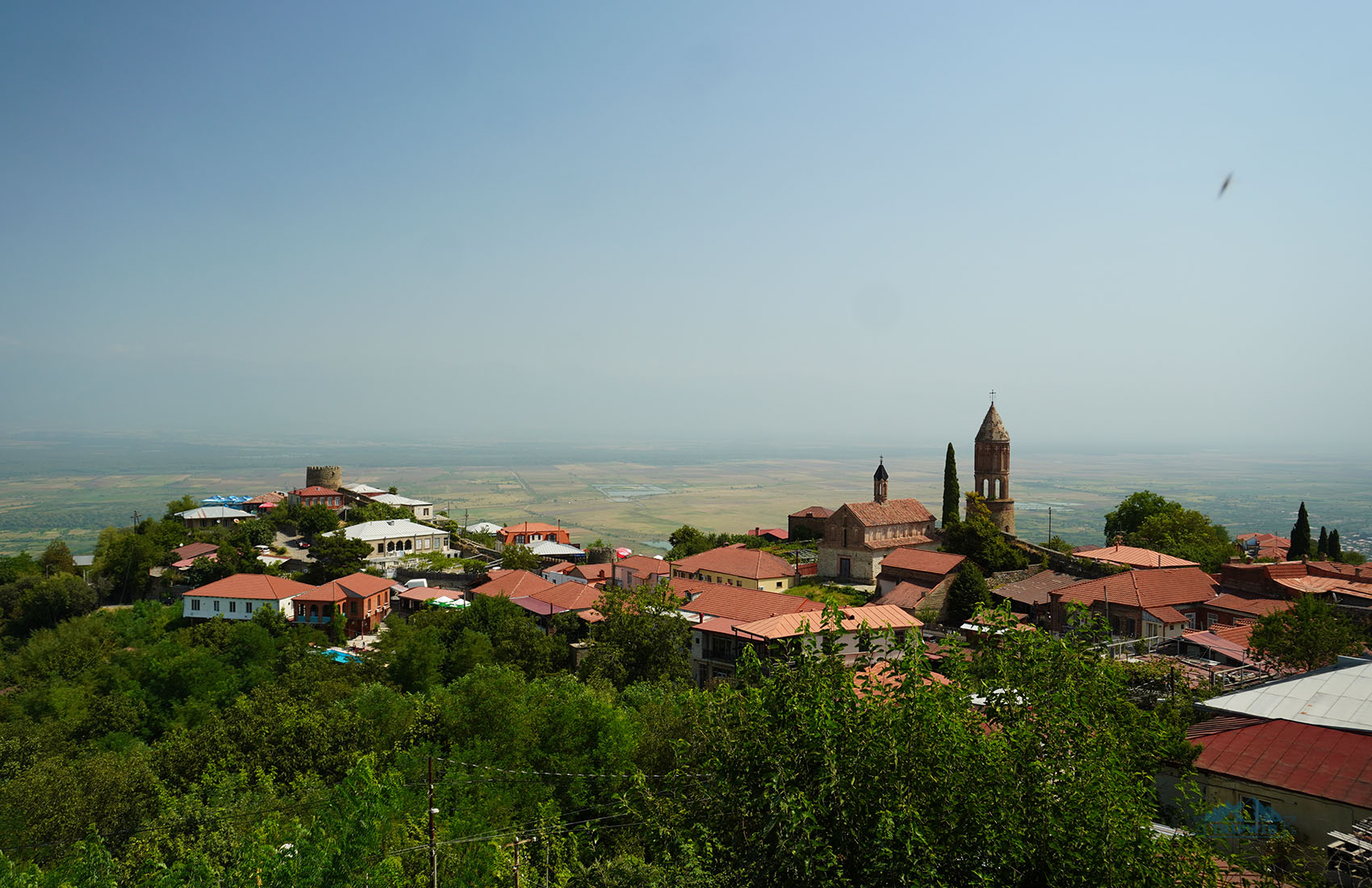
📍I really liked the view of the city from the viewpoint near terrace Panorama cafе (41.621714, 45.921727)
Telavi and its surroundings — the biggest city in Kakheti region, Telavi serves as a gateway to the Georgian wine zone. Most of the vineyards and wineries are clustered nearby. There aren’t many interesting landmarks in Telavi (besides the colossal hollowed out Giant Plane Tree which is said to be 900 years old), and it’s the city’s outskirts that were of particular fascination to me.
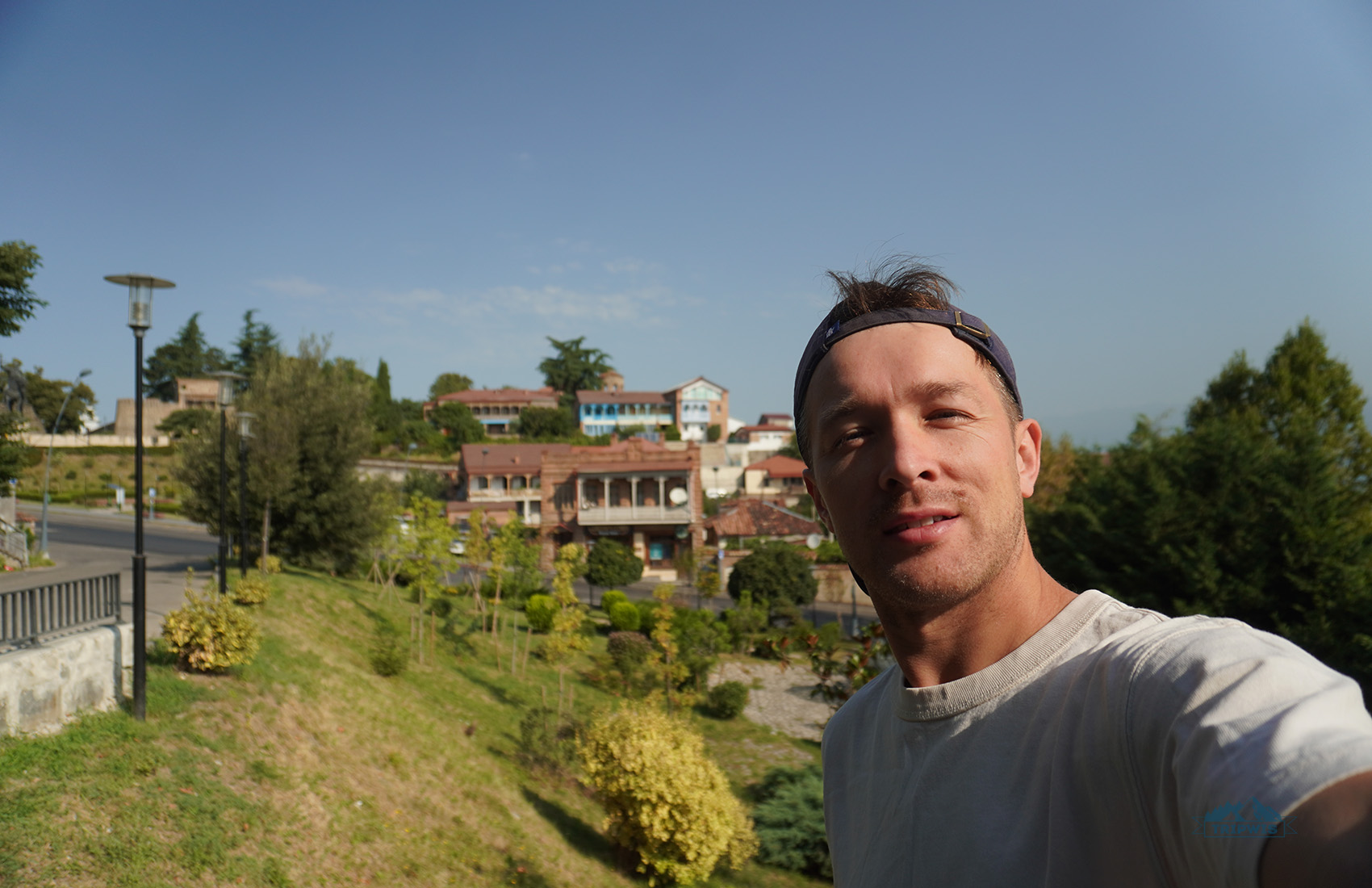
Wine lovers should absolutely drop by Shumi Winery for an hour-long excursion (10 GEL / $4) which comes with a quick intro to Georgia’s winemaking history and traditions. They even have a small Georgian Wine Museum and yes, they sell extremely limited bottles made out of 300-year-old grapevine for $3,000, but what really struck me was the guide’s enthusiasm. Out of five winery tours we took in Kakheti, Shumi’s was the best. If you want, you can stay here a bit longer and taste their wines (from 20 to 40 GEL / $7,5–$15).
History buffs and spiritual devotees should make the trek to one of the wonderful monasteries of Dzveli Shuamta, Ikalto, or Alaverdi (last two are undergoing restoration) — all set near Telavi, they’re memorable detours from your winemaking exploration of Kakheti.
Gremi’s Archangels’ Complex and Nekresi Monastery — a couple other must-visit places in the Kakheti region. Set further away from Telavi, they’re still worth the drive.
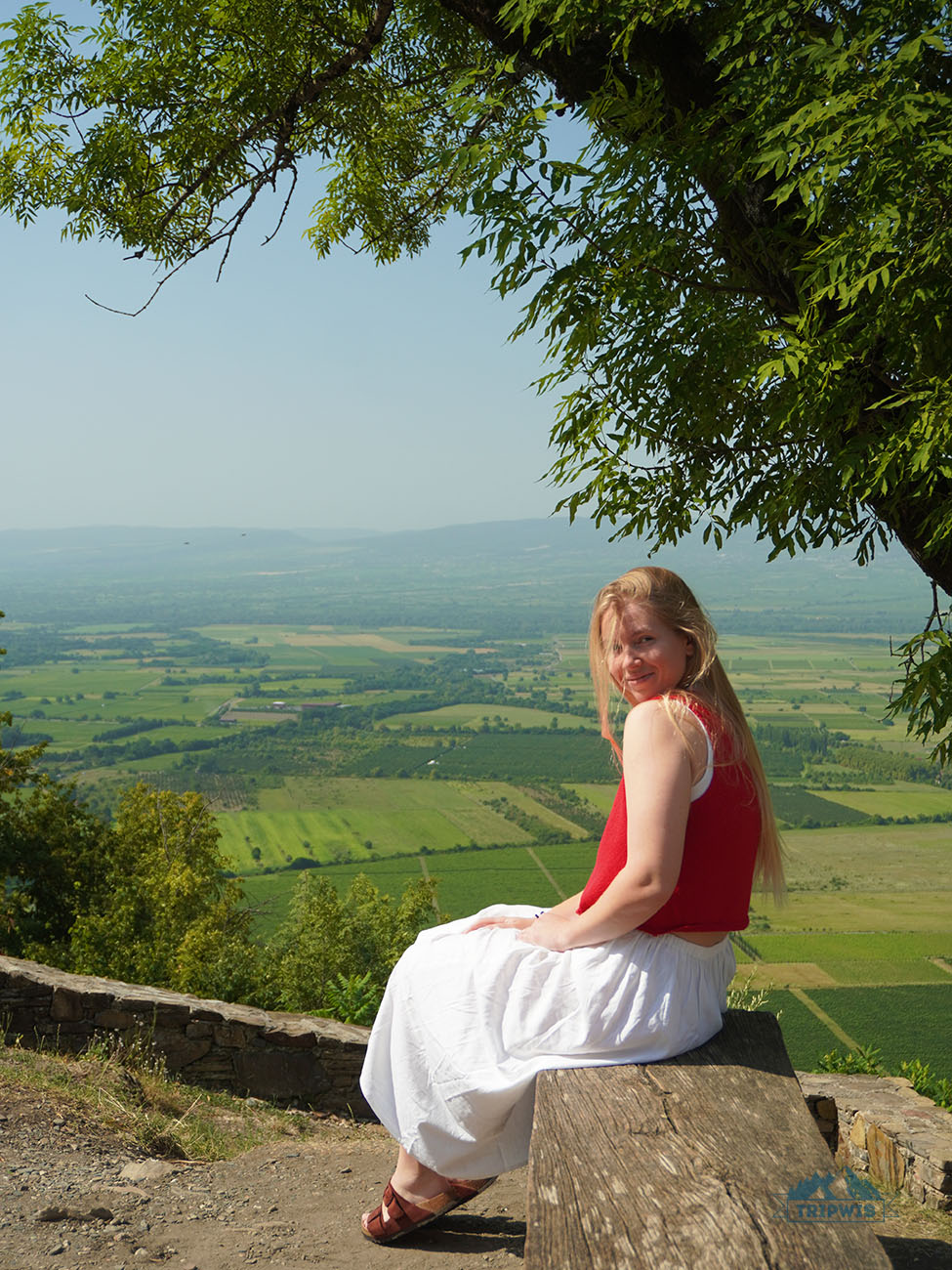 |
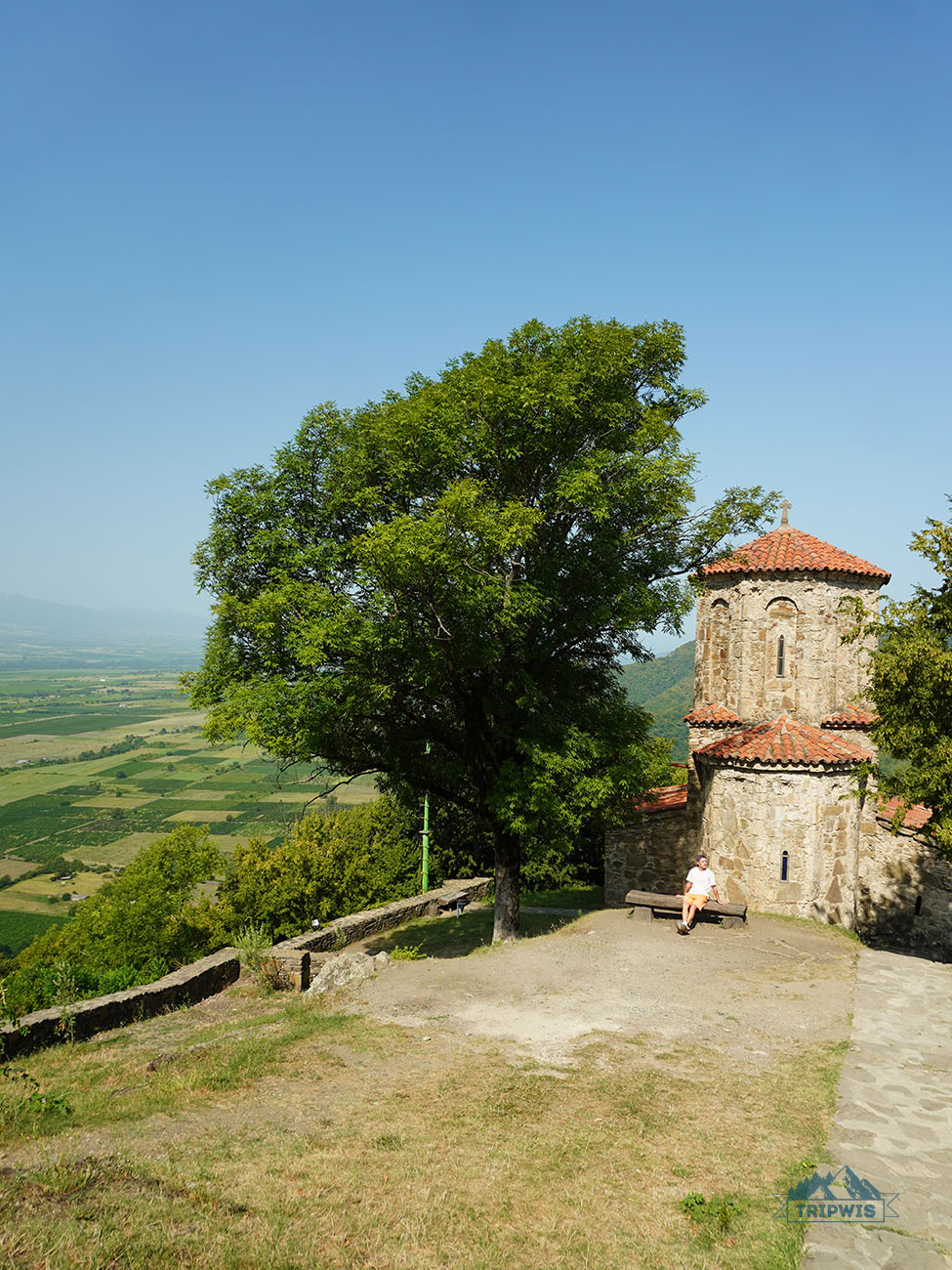 |
If you dig a little, you’ll realize that Gremi was the capital of the Kingdom of Kakheti, and it also served as an important stop on the Silk Road — both accomplishments impressive enough to merit the title. A royal tower, a church, and a bunch of ruins are all that’s left to see.
Side note: Reconstruction is underway in Gremi Monastery as of August 2025.
But I personally vote for Nekresi Monastery. If you’re lucky enough to get there by 9 a.m. or earlier, you’ll step into the medieval picture with no one and nothing to disturb the vibe. Just the birds chirping and the subtle sounds of life echoing within the ancient walls. You don’t even have to go inside (there are some old frescoes, though) — the towering brick buildings and views of the valley from the complex’s walls are impressive enough. The incredible panorama that you can see on our photos is all thanks to the monastery location on the cliff — and the road here is not an easy one.
Kvareli Wine Cave — carved into the foothills of the Caucasus Mountains, Kvareli Wine Cave of the Khareba Winery is the largest storage of Georgian wines. A tour of the damp underground tunnels that house the wine is a must for travelers curious about the secrets of the trade (20 GEL / $7,5) and a wine tasting session is up to you (35 GEL / $13).
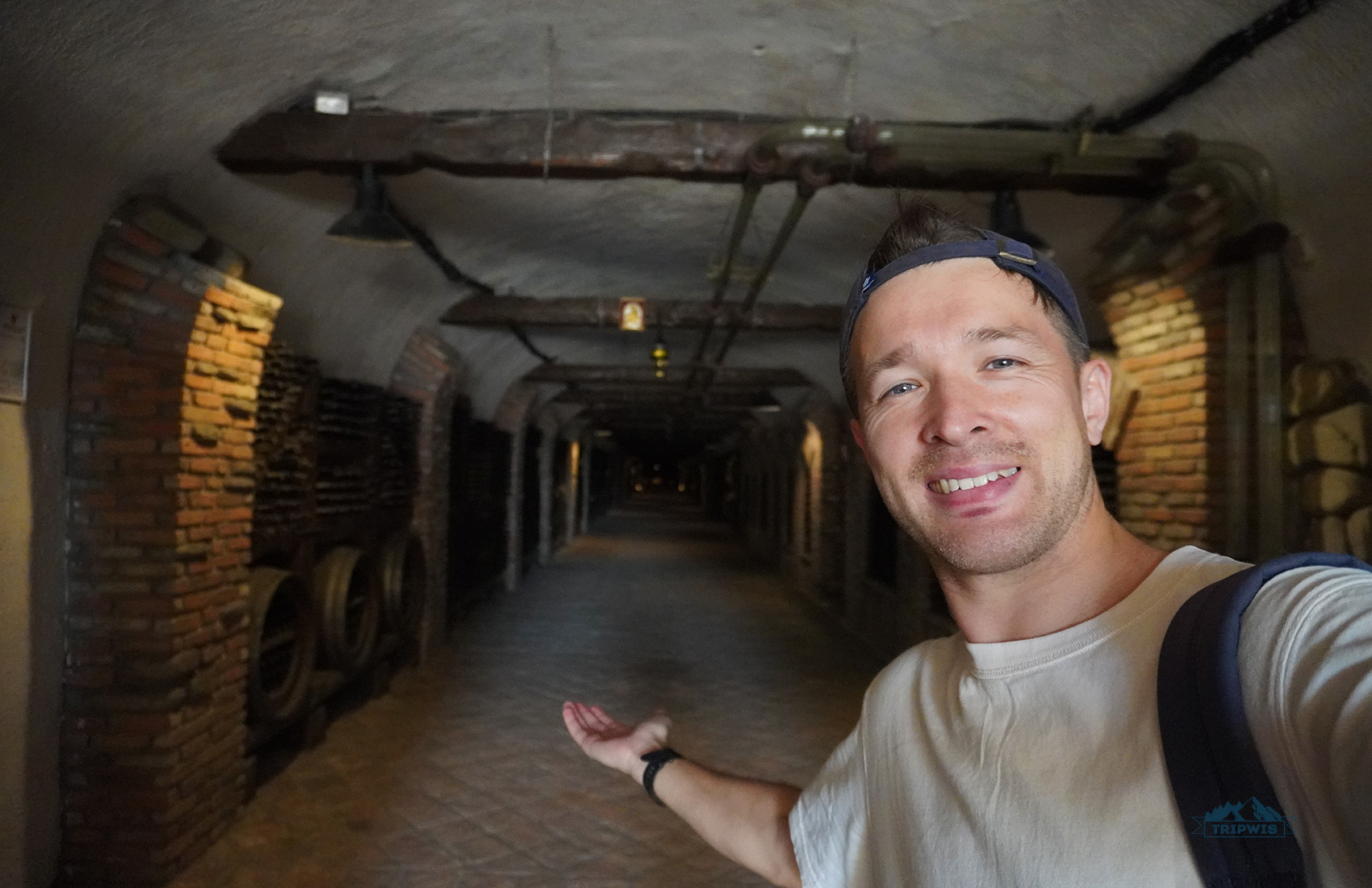
One-day trips from Tbilisi to this part of Georgia are more than possible. If you want to make it a weekend getaway, spending a night in Telavi — or, better yet, at a vineyard — would give you a chance to explore all of the wineries and historical places. Sighnaghi is a more charmingly authentic place to stay in, but it has fewer accommodation options.
Trips to Sighnaghi and Telavi can be done by public transport but after that, you’re entirely on your own. The rest of the region is not that easily explored by public transit options. That’s why you either rent a car and skip wine tasting/stay overnight at the hotel OR take a full-day organized tour so that you can relax and enjoy the wine and views.
— This guided tour ($49 per person) is the most popular among tourists, with nine (!) wine tastings at three different places. Besides, you’ll see the Bodbe Monastery and Sighnaghi.
— This wine tour from Tbilisi ($20 per person) is also a group tour but I like that the itinerary goes beyond the classic places. You’ll have a chance to explore Telavi and ride along the scenic Gombori pass.
— And if you can’t stand strangers’ company, then a private wine tour (from $95 per person) is what was created just for you.
Where to stay in Kakheti region?
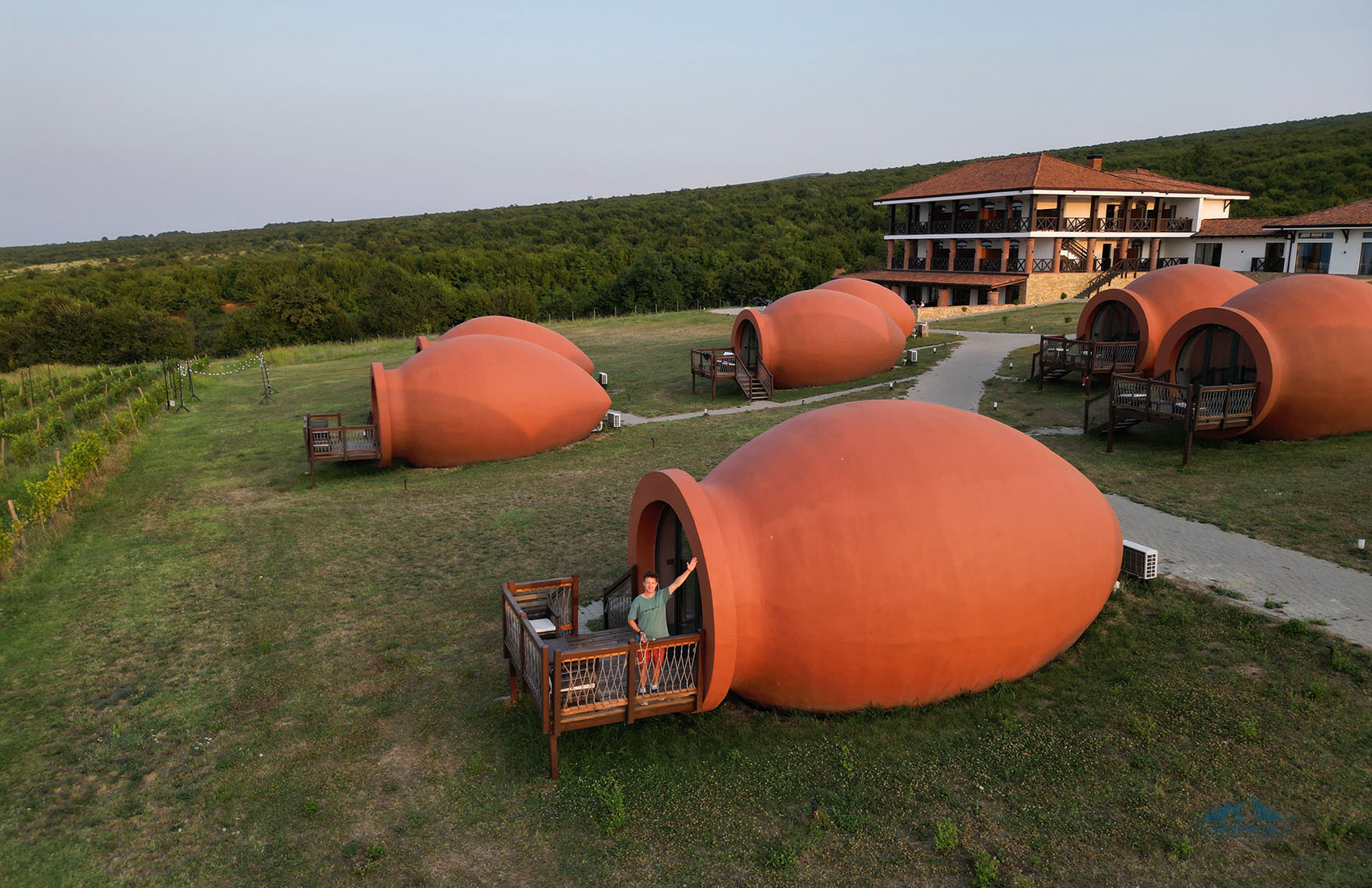
Okay, something incredibly beautiful is coming! When I was planning our Kakheti itinerary, I didn’t think about staying overnight. But then I saw this hotel that just popped up on your screen… and it decided it all.
I know, it doesn’t fit into the “day trip” frame, but if you have an opportunity, I insist that you book a night at:
- Hotel Qvevrebi (from $145 a night) — because it so adds up to Kakheti experience! First, you learn about qvevri, then you live in one. I immensely enjoyed our stay here: There is a vineyard right in front of your qvevri and the gorgeous Caucasus Mountains serve as the backdrop. If a mere contemplation of nature isn’t your thing, the hotel also has a swimming pool (excellent after a hot day), a restaurant and spa. It’s not a winery but there is one in 5-minute walk, plus the hotel organizes wine tastings.
*check the hotel rates on trip.com, it might be cheaper!
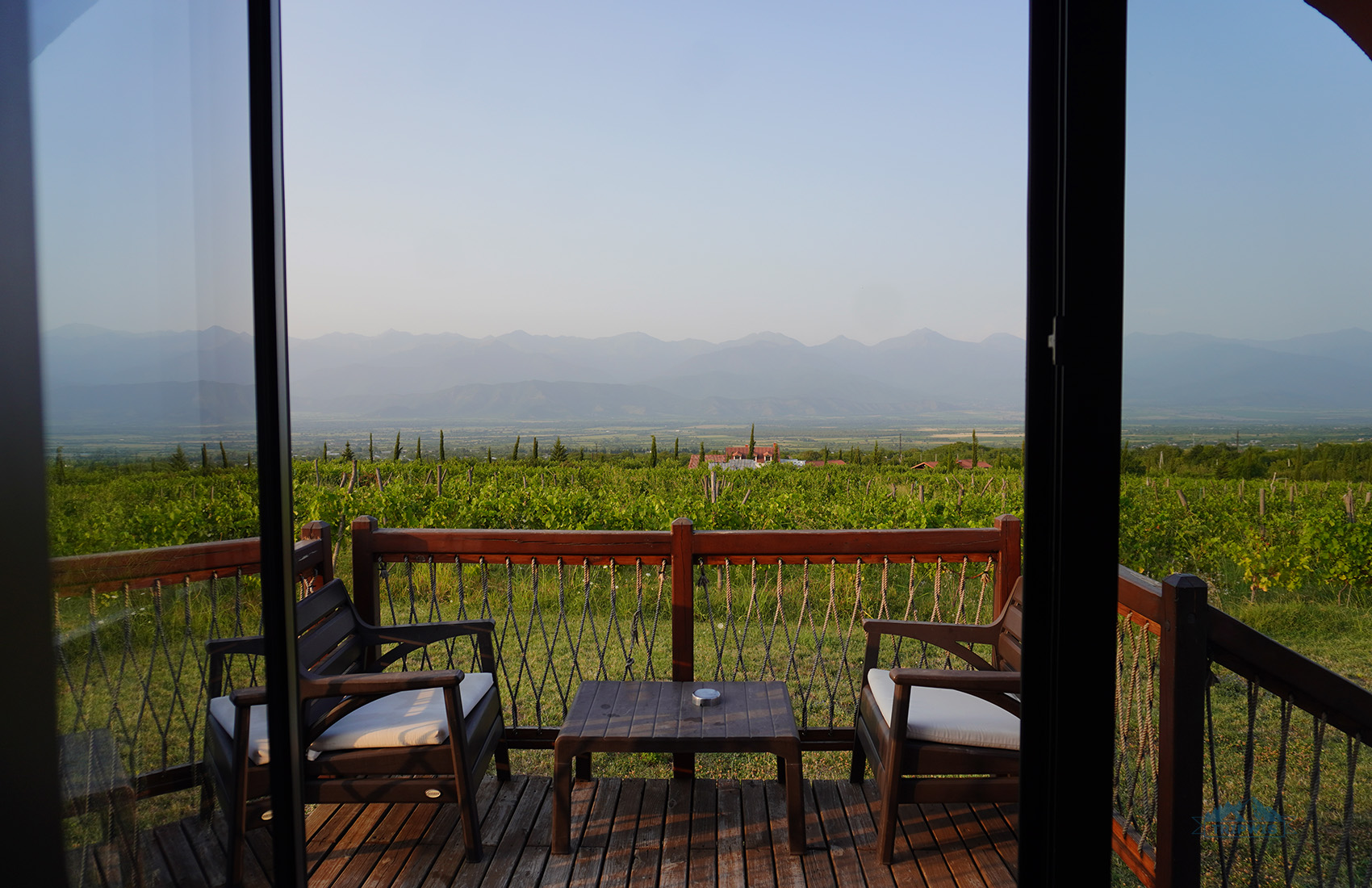
Other options worth considering:
- Hestia – Hotel, Wine and View (from $45 a night) — one of the cheapest yet decent hotels in Telavi. The absence of a vineyard or a winery on site is made up for by a bottle of welcome wine.
- Chubini Winery & Cabins (from $80 a night) — located in the middle of the road between Gremi and Nekresi Monasteries, Chubini is a great winery with accommodation. If you want to learn about the art of crafting the Georgian wine, have a sip of different assortments, and then chill in a cabin with a view, that’s the place.
- 4* Communal Hotel Telavi (from $130 a night) — we stayed at Communal in Tbilisi (it’s a hotel chain), and I’m sure that Telavi’s one is equally quirky and cozy.
Side note #1: Traveling to Kakheti by car is a great choice, but it’s not the best idea to imbibe (even a little) on local wines as a driver. The official blood alcohol limit in Georgia is 0.3 per mille.
Side note #2: The road from Tbilisi to Sighnaghi and throughout Kakheti is in good condition (just a 2-kilometer stretch of narrow serpentine at the end). However, the road from Tbilisi to Telavi could be better: It’s made up of continuous switchbacks with lots of potholes (but still doable in a compact car). And as I’ve already mentioned, the road to Nekresi monastery is well-paved but pretty steep and requires some driving skills.
2. Mtskheta — to visit the ancient churches

🔹Three words about this trip: Churches, monasteries, cathedrals
🔹Distance from Tbilisi: 25 km / 15 mi
🔹Time in transit (one-way): 40 minutes
🔹Best way to get here: Marshrutka from the Didube bus station / car rental
🔹Can you combine it with smth else: Yes, with the Georgian Military Highway (#3 in my post) or with Gori and Uplistsikhe (#4)
The small old town of Mtskheta is one of the best places to visit in Georgia for tourists — it is the first location you think of if you want to do some serious sightseeing outside Tbilisi. Why? It’s the former capital of the country and the birthplace of Christianity in Georgia.
Numerous medieval churches of Mtskheta have accorded the town the UNESCO World Heritage Site status. But religious pilgrimages for timid octogenarians (or weddings for the hopeful romantics) are not the only reasons to visit Mtskheta. It’s one of the oldest towns in Georgia and the world to be continuously inhabited, and the historical remnants are on full display here.
Side note: If you’re not into religious sights, you can skip Mtskheta and have a look at it from the viewpoint of the legendary monastery. Technically, it’s not in Mtskheta but closely associated with it:
Jvari Monastery — probably, the most famous attraction near Tbilisi. This ancient monastery complex is perched atop a tall hill with views of Mtskheta and the iconic confluence of the Kura and Aragvi rivers.
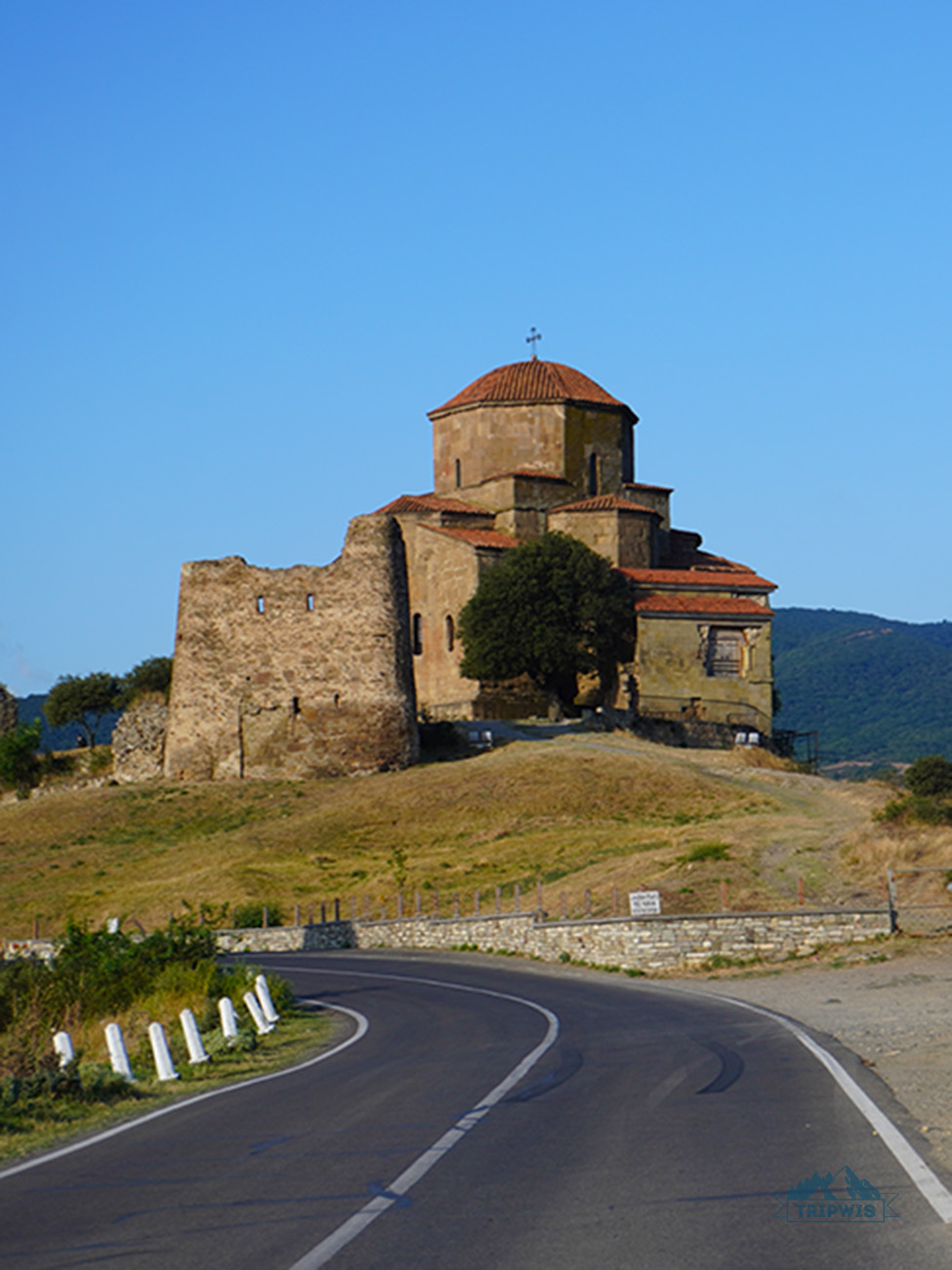 |
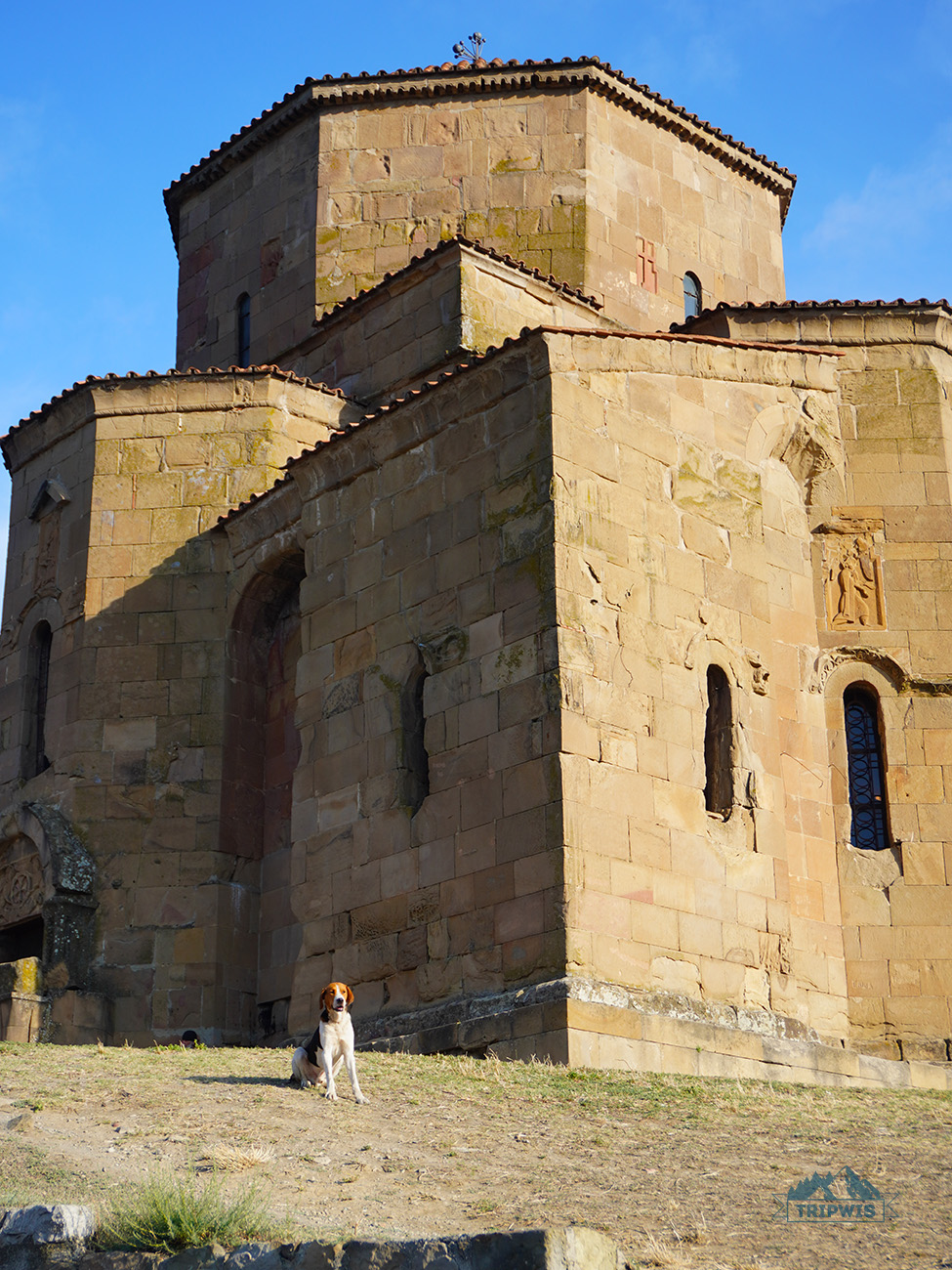 |
Jvari Monastery is a must-visit even if you’re far from a religiously curious person. First, it’s so photogenic — with hills in the background and a perfectly curved road — that it’s hard to resist the urge to stop for pictures a few hundred meters before the car park. Second, you literally FEEL the age of the monastery. They say that it was erected in 7th century in the place where Saint Nino (the aforementioned woman that converted Georgia into Christianity) put a first wooden cross.
If you’re not driving, you can get to Jvari Monastery (it’s 12 km away from town) by a taxi from Mtskheta. Usual price is 20 GEL / $7,5 for a round trip + waiting time.
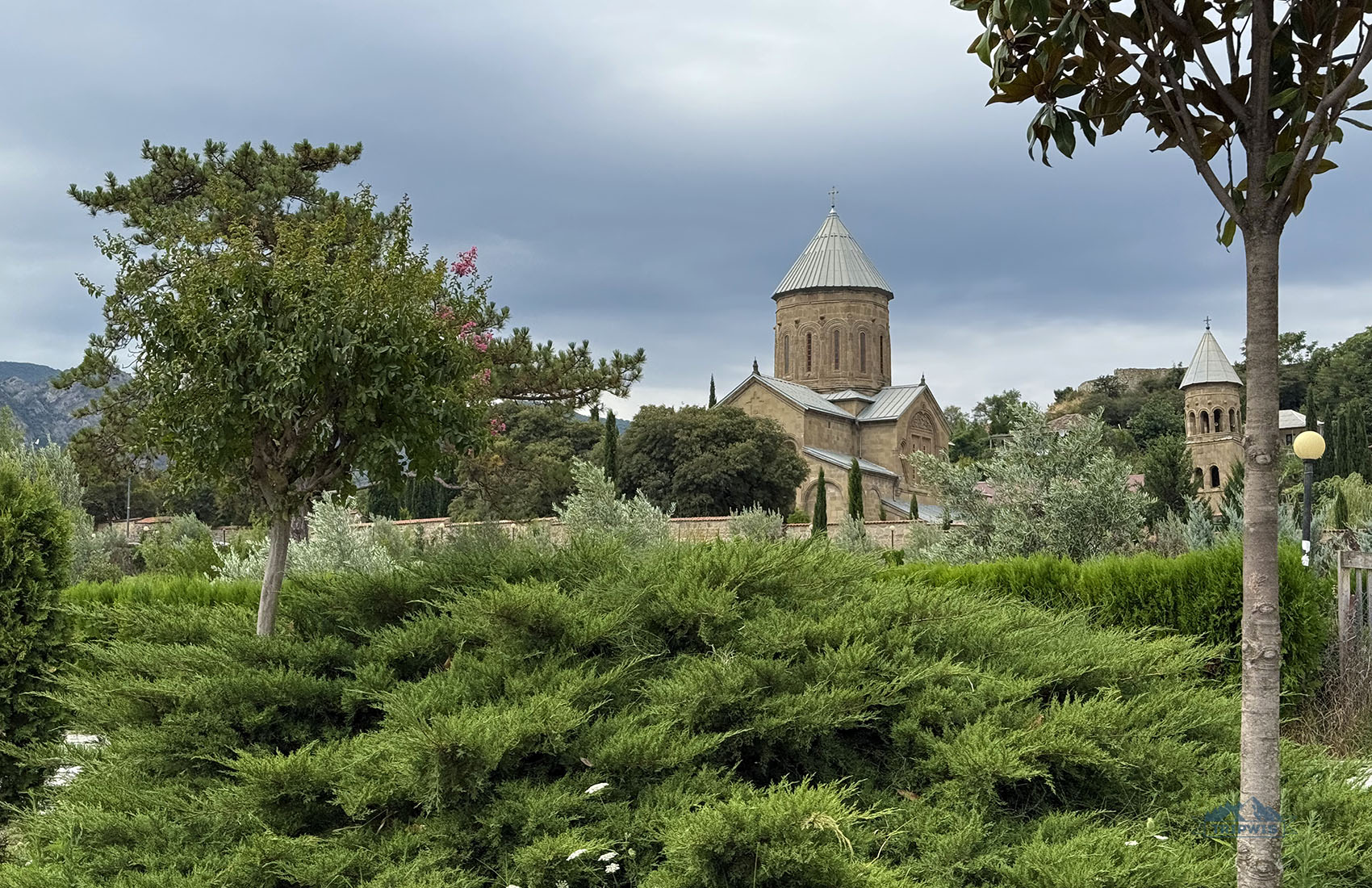
If you’re not getting bored with the whole cathedral/church/fortress schtick, here are famous Mtskheta churches:
- Svetitskhoveli Cathedral — rumor has it that Christ’s robe was buried here, with a cedar tree growing from the tomb. When the church’s plans were in the works, they created seven pillars from that tree. And while six of them were erected fine, the seventh one couldn’t be moved, until Saint Nino prayed on it. Not only did it erect all by itself, but it started oozing healing liquid that could even cure the blind. That’s where the name Svetitskhoveli (or life-giving pillar) came from. The column is still there!
- Samtavro’s Convent — apart from the fortress-like composition and heavy focus on religion, Samtavro Monastery sets itself apart with Samtavro Necropolis — a final resting place of some of Georgia’s most prominent kings and queens. Saint Nino also had a hand in the monastery’s erection.
Good location and transport accessibility are also reasons for the popularity of Mtskheta. Being the closest town to visit outside of Tbilisi, Mtskheta provides multiple answers on how to get here:
— Grab a taxi for 20–30 GEL / $7,5–$11 to save time
— To save money, take a marshrutka from the Didube bus station (2 GEL / $0,7). For Mtskheta, it works fine as marshrutkas are frequent, departing every 20 minutes and leaving you near Samtavro’s Convent. Ask around to find where all the mini buses are congregating. Its exact location is here if you like to plan every detail ahead.
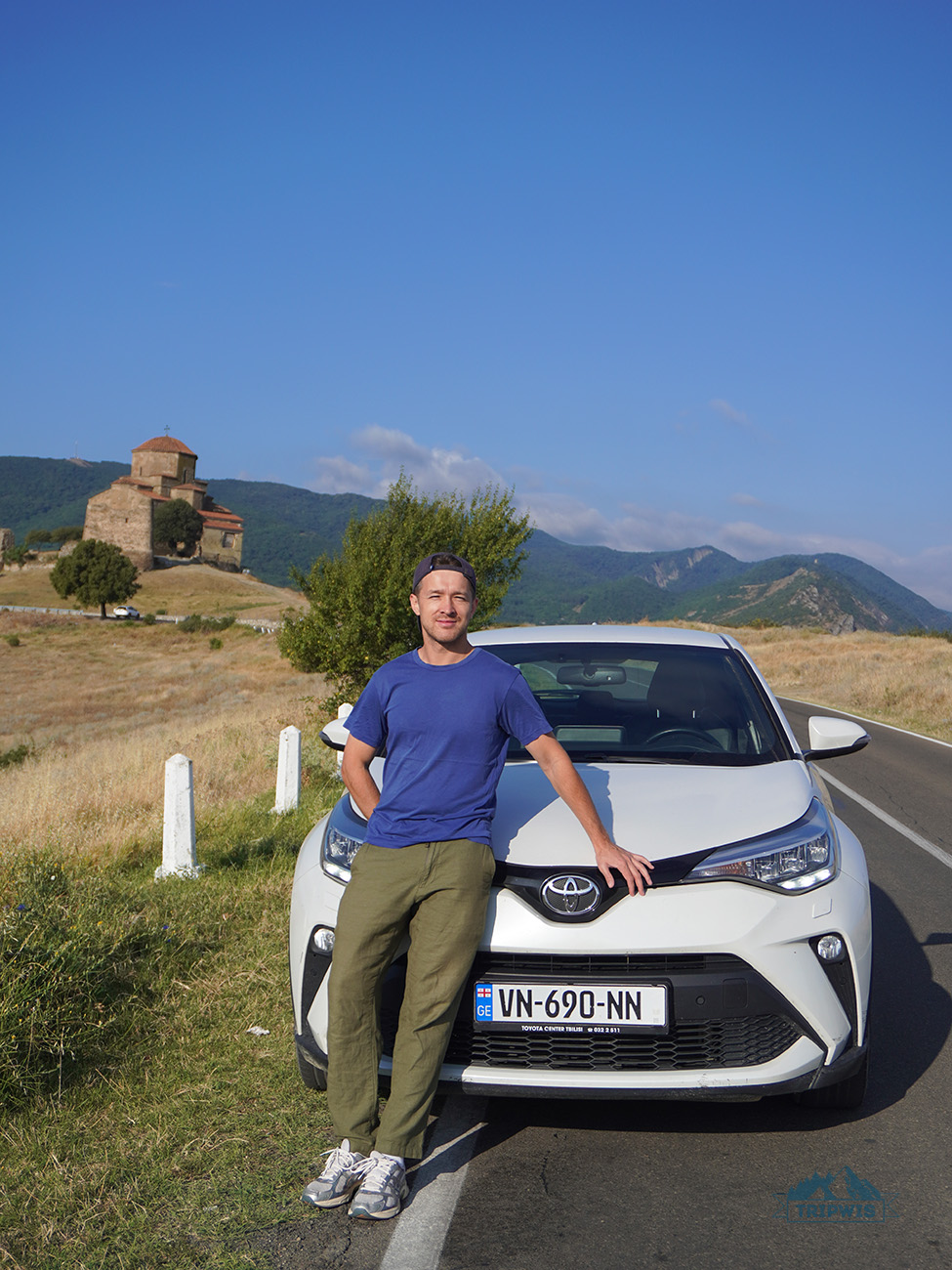 |
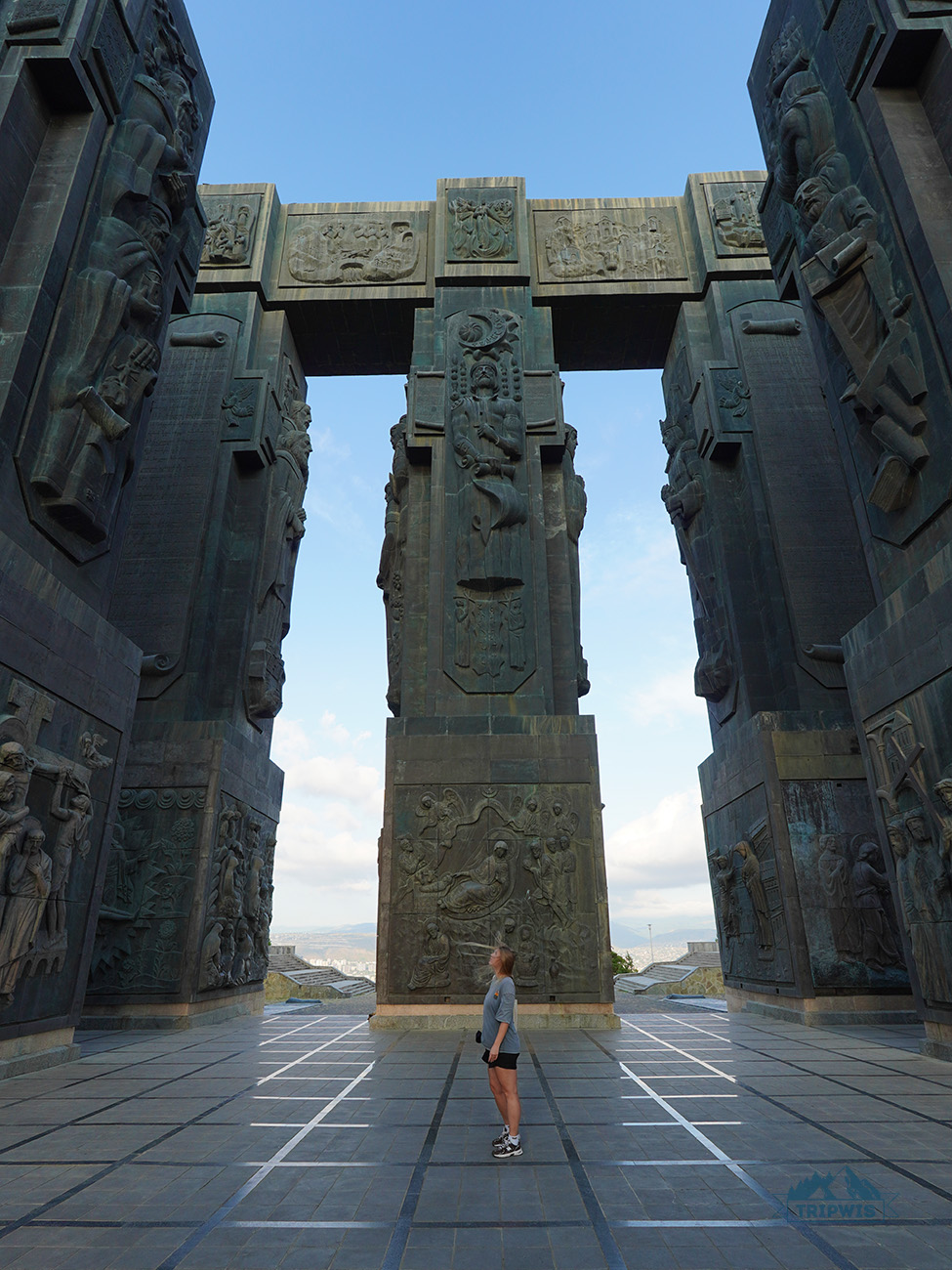 |
If you do not want to worry about transfers, you can see all of the Mtskheta top sights with a guided tour from Tbilisi ($20 per person). Five hours of Mtskheta exploration — and your evening remains free! — plus a bonus of visiting the Chronicles of Georgia, a monumental structure near Tbilisi that really shocked me.
Or you can go big and don’t go home for 10+ hours with this tour to Mtskheta, Gori, and a cave city of Uplistsikhe (from $43 per person) — a great option to see all at once.
Where to stay in Mtskheta?
Though a rare occasion, but some travelers decide to spend a quiet night in Mtskheta (some do it against their will after missing the last marshrutka back to Tbilisi; though hailing a taxi is always an option):
- Tatin – Hotel & Café in Mtskheta (from $33 a night)
- Hotel 12 Tve (from $40 a night)
3. Stepantsminda — to marvel at Mount Kazbegi and ride along the Georgian Military Highway

🔹Three words about this trip: Epic mountain views
🔹Distance from Tbilisi: 150 km / 93 mi
🔹Time in transit (one-way): 5 hours with all necessary stops
🔹Best way to get here: Car rental / guided tour
🔹Can you combine it with smth else: Add Jvari Monastery and the Chronicles of Georgia as start/end points
Heading to Stepantsminda and Kazbegi is one of the best day trips from Tbilisi. We did it twice — on a tour in late fall and by car in summer, and both were EPIC adventures! You will be hard pressed to find the same levels of natural beauty anywhere else in Georgia.
Why do so many travelers set out to visit Kazbegi from Tbilisi year-round? Located at the far end of Georgia, close to the Russian border, Kazbegi is connected to the capital by the Georgian Military Highway — a stretch of the road running through the most spectacular scenery one can imagine. Green rolling hills, mountain slopes that start with snow and end in wildflowers, deep gorges, — you name it! The more hardcore adventurers hit the slopes in the winter or go hiking the high altitude treks in the summer, and the rest of us mortals just enjoy the nature’s eye candy and take a myriad of photos to prove that what we see is indeed real.
This summer, it took us about five hours to get to Stepantsminda from Tbilisi by car. The thing is that Georgian Military Highway passes through many points of interest from which I’ll mention:
- Ananuri Fortress — a well-preserved stronghold complex nestled on the bank of the Aragvi River with fjord-like panoramas around
- Pasanauri Village — a village famous for having first Georgia’s khinkali recipe
- Gudauri View Point (or Georgia-Russia Friendship Monument) — a colorful tile mural overlooking the deep natural gorge in-between ragged mountains
And at last, Stepantsminda. This small settlement offers breathtaking (I hate this word but I can’t think of a better one) views of massive mountains all around it — and I mean MASSIVE! So much so that if you come from a place that’s mostly flat ground, you’re bound to strain your neck admiring the sky-puncturing mountain peaks. Mount Kazbegi, also known as Kazbek, the seventh highest peak of the Caucasus (5,054 m), is the one to catch all of your attention.
- But here’s a trick: The gorgeous grey giant you catch sight of when approaching Stepantsminda is not Kazbegi! Kazbegi is located on your left and often hidden from view by the clouds. Keep in mind that the ✨ right mountain ✨ is the one with a permanently snow-dusted peak.
And if your camera roll hasn’t yet run out of space from all the photos you took along the way, there are MORE picturesque locations near Kazbegi:
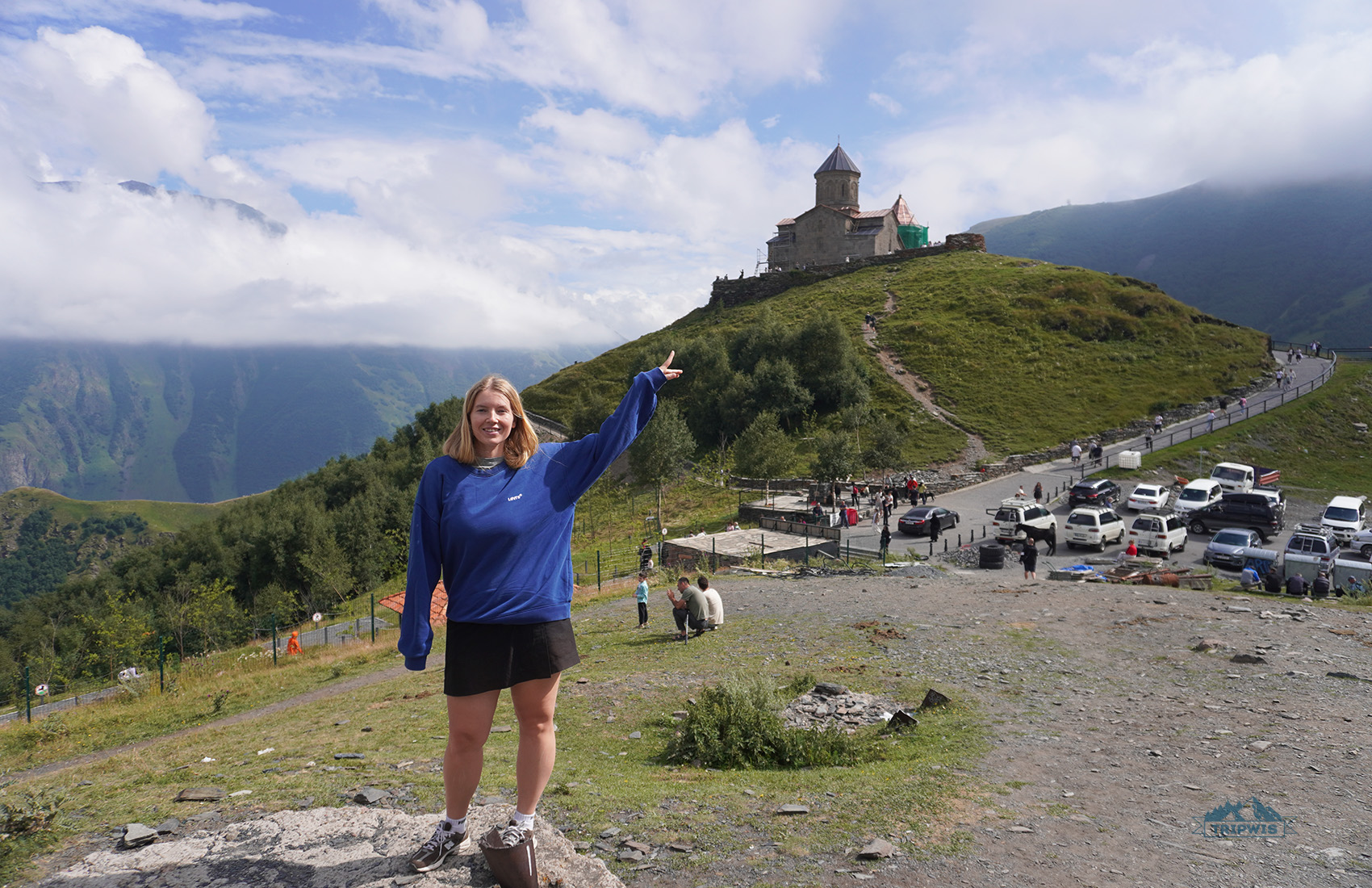
Gergeti Trinity Church — a magnificent medieval chapel located on the slope that offers unbeatable views of the surrounding Caucasus Mountains. Set at 2,170 meters above sea level, the church finally got its own sealed road — so if you’re driving, you don’t have to hike for 2 hours or pay 20 GEL for a 4×4 taxi.
Gveleti Big Waterfall — set within a 7 km drive from Kazbegi, this natural landmark is yet another contender on our list of places to see in Stepantsminda. You should know that there are actually two waterfalls that sit shoulder to shoulder with each other: A smaller one, and another that is as roaring and misty as you would expect. Water dropping from 30 meters up in the air creates a spectacular sight, add to that a short hike (500 meters) filled with blooming flowers and verdant shrubbery to reach the destination and you’ve got yourself a perfect detour.
Sno Giant Head Sculptures — also known as “Georgia’s Easter Island”, these giant head sculptures create an open-air gallery praising Georgia’s notable leaders and artists and immortalizing their faces in granite.
Juta-Chaukhi trek — to get a glimpse of the pristine lake backed by the “Georgian Dolomites” after rather strenuous 1,5 hours of hiking. I’ll be posting a detailed article soon because this is such an unbelievably beautiful hike that I want to capture it here on our blog!
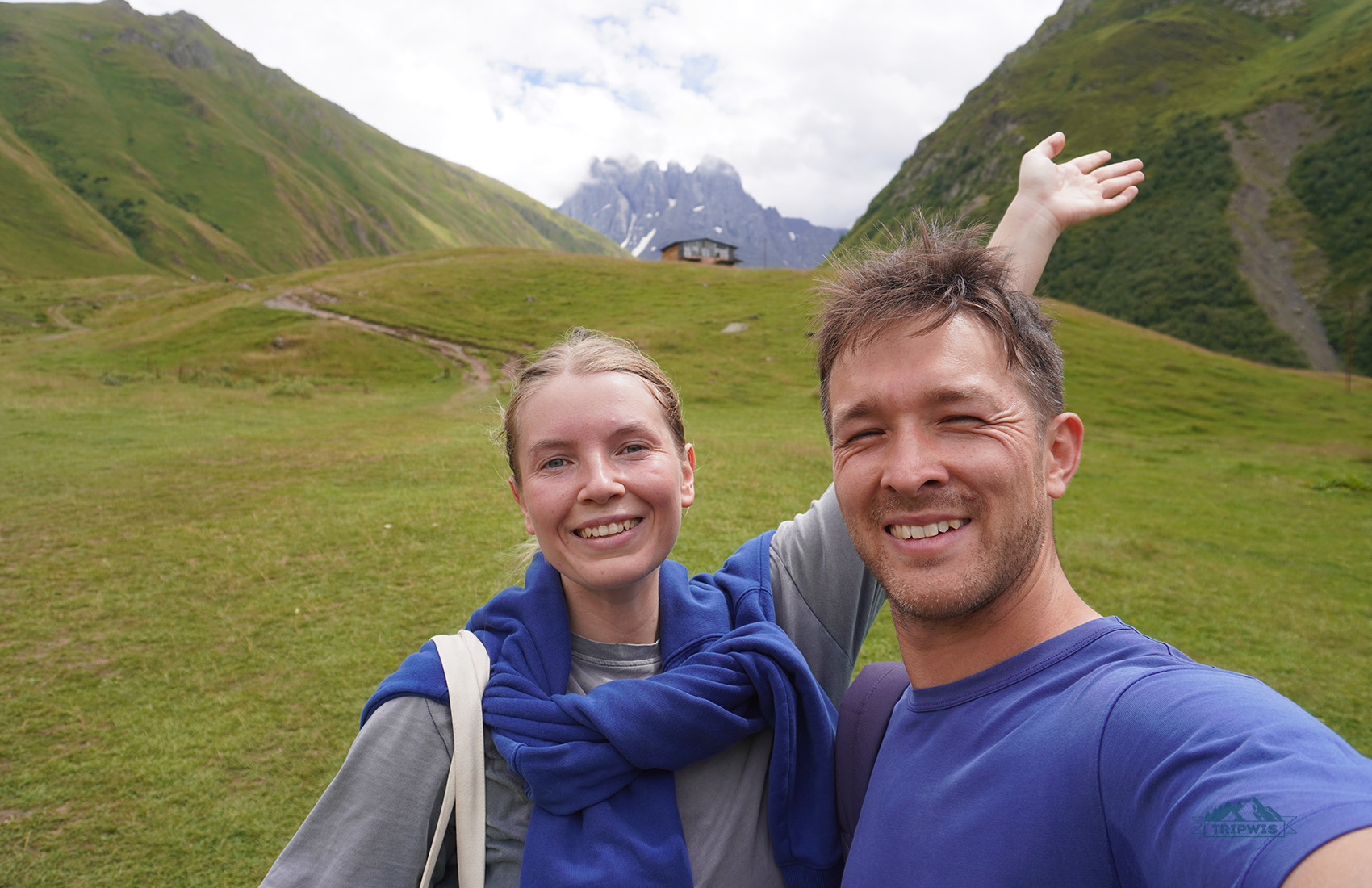
Renting a car (we used LocalRent) is a good option for a Tbilisi–Kazbegi road trip, but note that the serpentine road full of trucks and zigzagging through the mountains promises a challenging drive, requiring substantial driving experience.
Side note: If you are planning to drive from Tbilisi in late fall, winter or spring, check the news — the road can be blocked due to weather conditions. And you’ll definitely need a four-wheel drive SUV and snow tires.
Marshrutkas (15 GEL one way / $5,6) depart from the Didube bus station every hour from 9 a.m. to 6 p.m. in both directions. But they go straight to Stepantsminda and back without stopping.
Three guided tours on a minibus I’d recommend:
— A full-day Kazbegi group tour ($39 per person) is the most popular and the one we took for our first time in Georgia. Not as flexible as your own ride, but all essential stops are included.
— Classis Kazbegi itinerary + hike in Truso valley ($80 per person) is a gem for those who are desperate for some walking activities while in the mountains. Truso valley lays between Gudauri and Stepantsminda, the trail isn’t difficult, and the views feel fresh since not everyone makes it here.
— A private tour to Kazbegi ($138 for two, $160 for four people) — no description needed, a guide just for your group!
Where to stay in Stepantsminda?
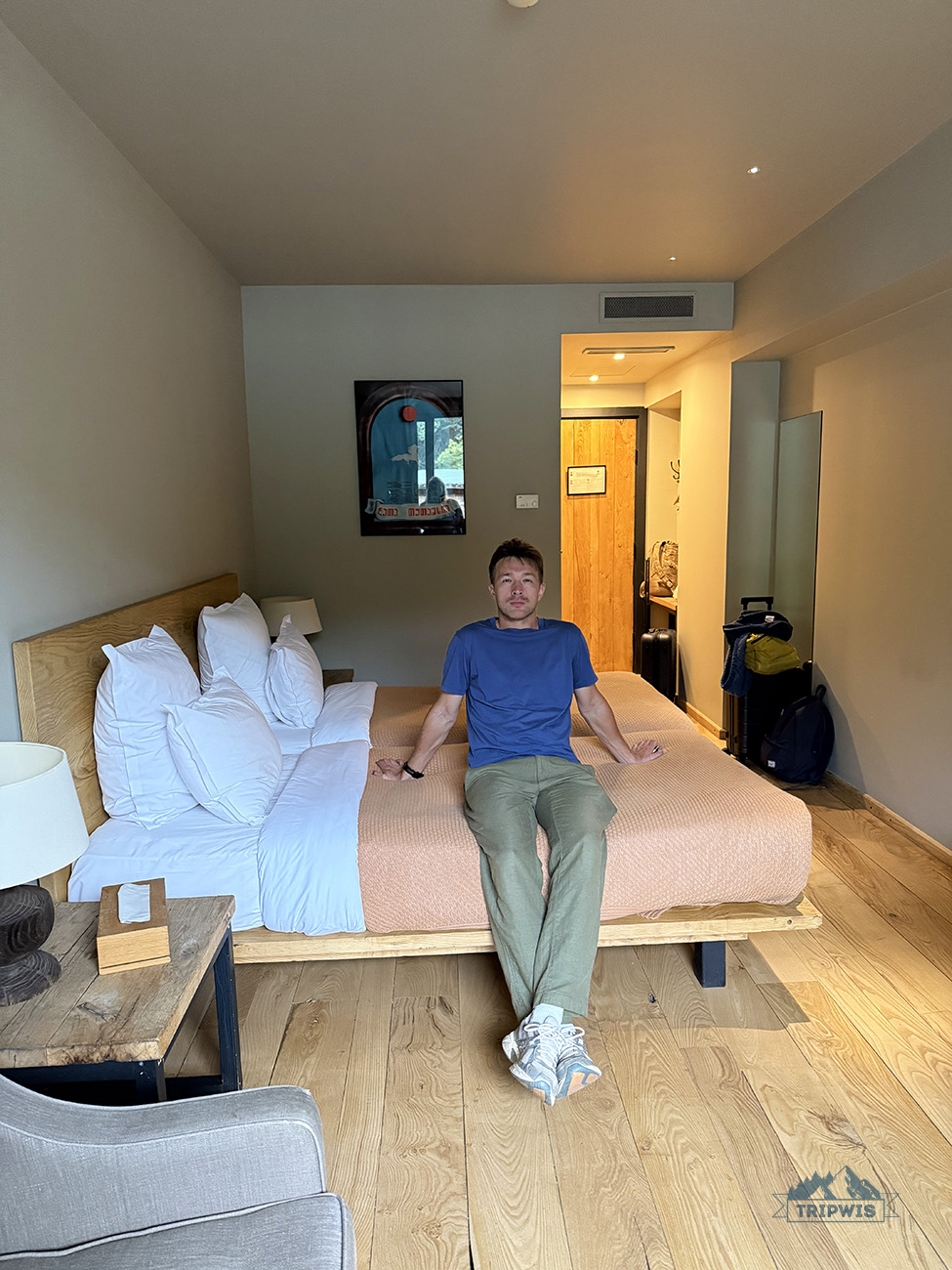 |
 |
Consider spending the night in Stepantsminda to enjoy the views without haste.
- Hotel Stancia Kazbegi (from $65 per night) — a small hotel near the marshrutka stop to and from Tbilisi. The main advantage, besides the price, is an unobstructed first-row view of Kazbegi.
- 5* Rooms Hotel Kazbegi (from $190 a night) — with this one, I’m biased! First, after the Juta hike I fell in love with hotel’s spa and pool where you can relax on a lounger that look out over the whole Stepantsminda and Kazbegi. Second, I’ve never seen such an opulent and exquisite hotel breakfast (homemade all-butter croissants speak for themselves). Even if you’re not staying here, still come for lunch: Terrace views at Rooms are to die for and open to restaurant’s’ visitors!
4. Gori and Uplistsikhe — to learn about the past
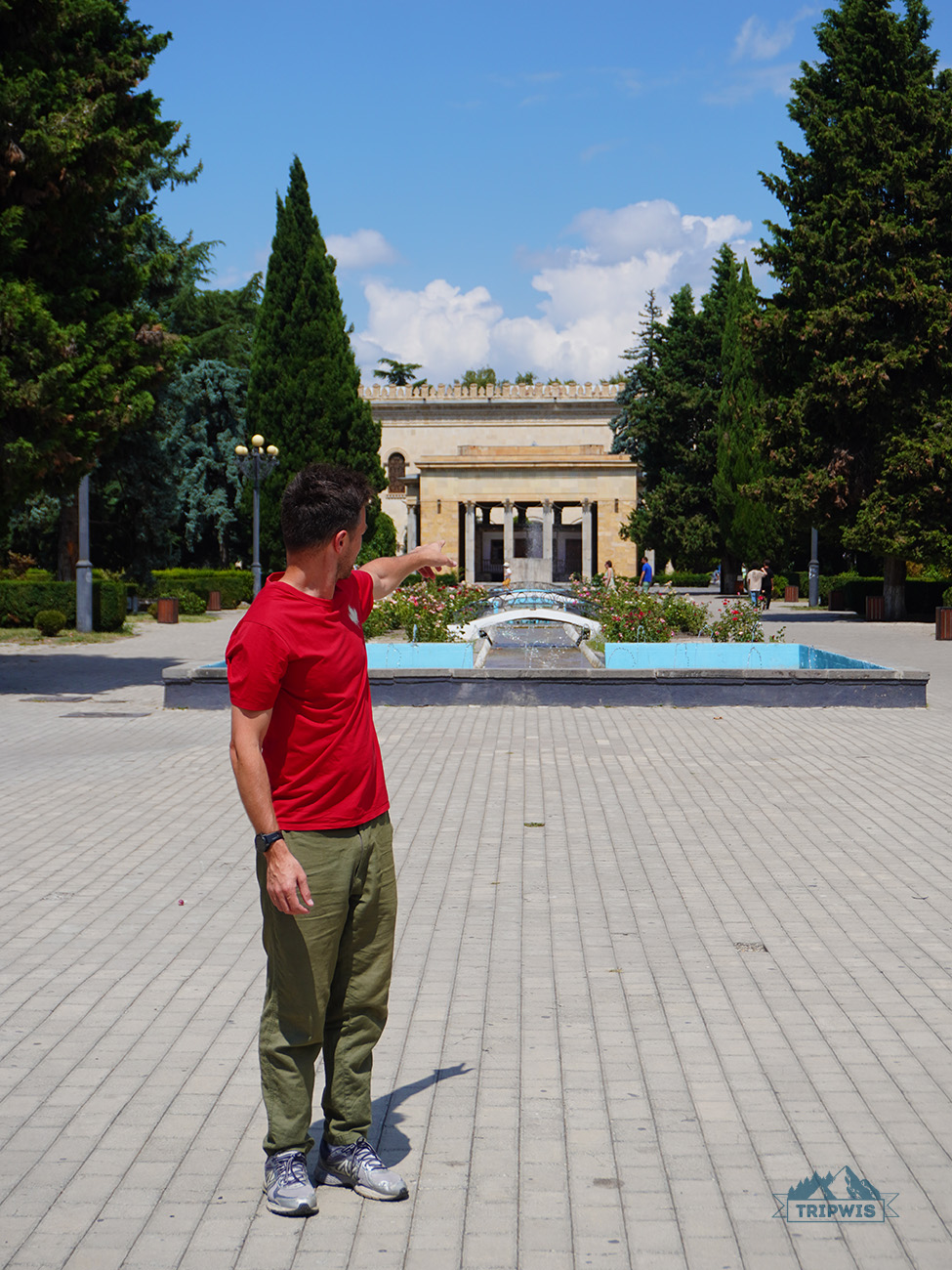 |
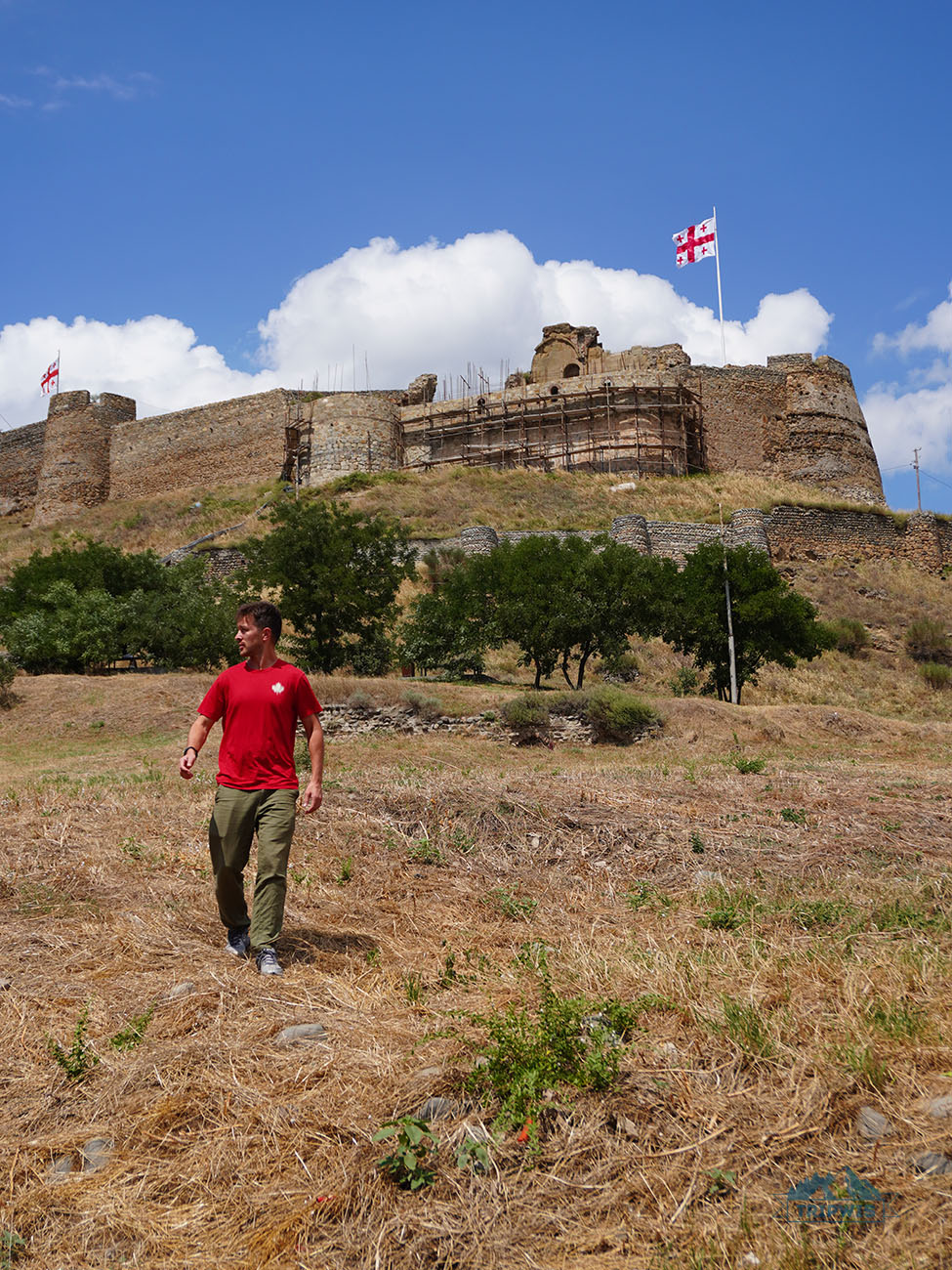 |
🔹Three words about this trip: Caves & Stalin Museum
🔹Distance from Tbilisi: 90 km / 56 mi
🔹Time in transit (one-way): 1,5 hours
🔹Best way to get here: Marshrutka / guided tour / car rental
🔹Can you combine it with smth else: Mtskheta (#2) or Borjomi (#5)
The city of Gori and a cave town of Uplistsikhe combine into a perfect place for a day trip. These destinations are great for exploring by themselves, or as part of the tour with Mtskheta.
As I was planning our Georgian escapades, Gori was the location that puzzled me the most — I wasn’t sure if it’s worth a drive. Being the birthplace of Joseph Stalin is an important historical characteristic of this rather big city, but what really got me interested is a fortress.
Gori loosely means hill, and upon entering the city you’ll see why. Not only is it surrounded by stately Caucasus Mountains, but it also has a fortress structure on the hill protruding from the ground right in the middle. This alone and a unique tourist attraction of Uplistsikhe make Gori a fun destination for a day trip from Tbilisi.
- Stalin Museum — Gori’s main tourist draw; the museum is considered to be pretty controversial. The exhibition lets you look inside Stalin’s early life and the consequent rise to power. Plenty of artefacts (including bigger structures, like his private house and railway carriage) on show are at their best objective. Every person had (or has) different thoughts on Stalin: Tyrant, national hero… What I can agree on is being informed never hurt anybody — so you can pay the 15 GEL / $5,6 for entry and let yourself be transported into the multifaceted life of such a revolutionary persona.
- Gori Fortress — a perfect palate cleanser after the info-heavy Stalin Museum in Gori. It’s absolutely free to climb atop the fortress and admire a panoramic view of the mountain slopes and a city nestled in the foothills. Learning more about the fortress’s history (destroyed and rebuilt multiple times) will make you appreciate the structures left standing nowadays way more. Make sure to seek out the ruins of the small church inside the grounds, they’re a true historical marvel.
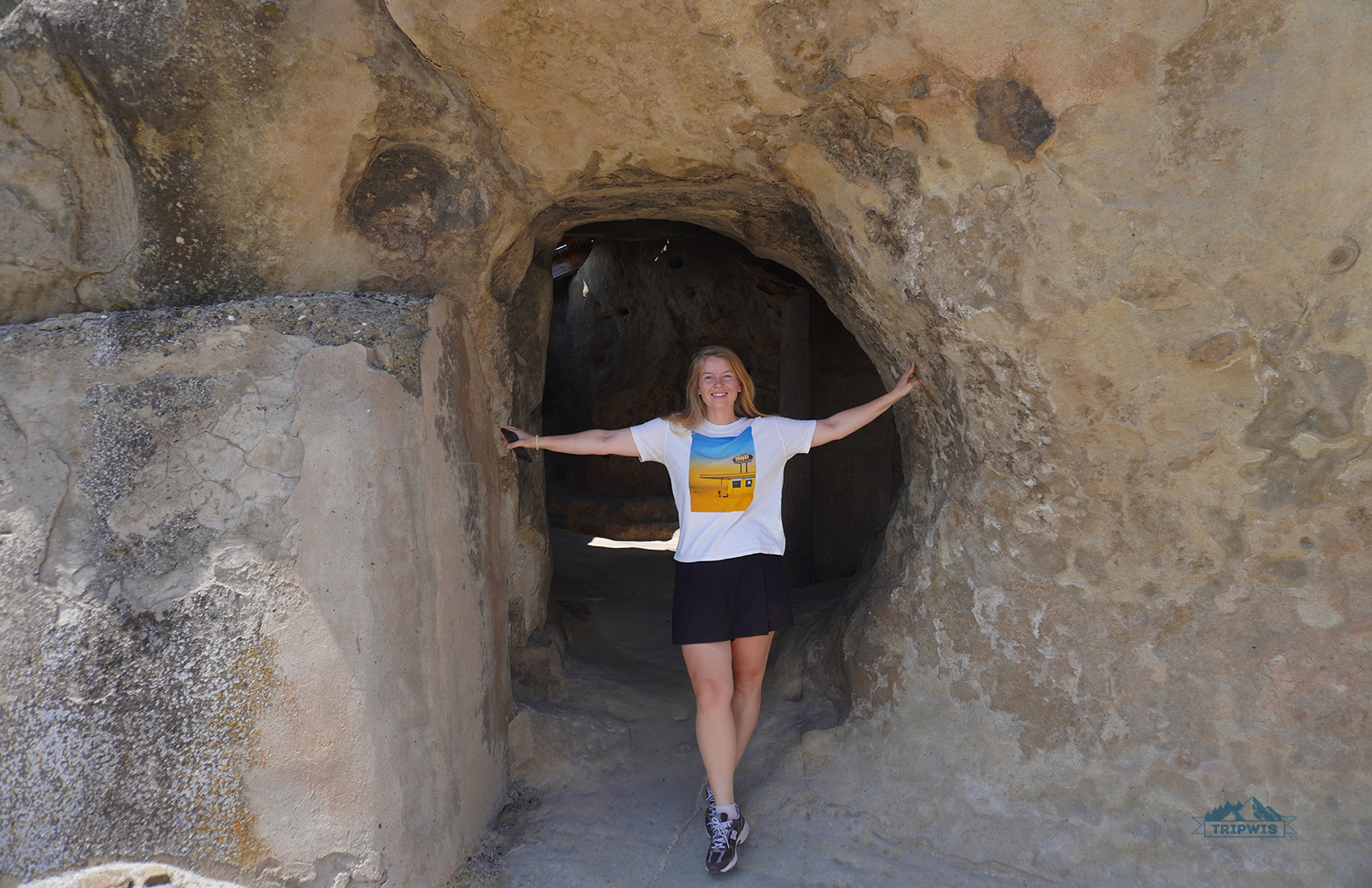
Uplistsikhe is an ancient cave settlement set some 10 km away from Gori and a must-do stop if you’re in the area. This is where the country’s rich history is most palpable: As you’re climbing steep walls and ducking your head into dimly lit caves, you’re discovering the city that existed long before Christianity was even a thing in Georgia! You’ll see huge amphitheaters where pagans worshipped their many gods and winding structures that were used later, when the stronghold became an important trading center. Cradled at the crossroads of ancient civilizations, Uplistsikhe is famed for various styles of rock-cut cultures that were used during construction.
For a 15 GEL / $5,6 entry ticket (+5 GEL if you want a wine tasting), Uplistsikhe has plenty of sightseeing to offer. Note that it is pretty windy and hot out here, so dress accordingly and bring water. Parking is 5 GEL.
Side note: If you’ve been to the cave towns of Cappadocia and you’re not the kind who gets haunted by unchecked boxes on “must-sees in Georgia” list, you can skip Uplistsikhe.
Traveling to Gori is one of the easiest day trips from Tbilisi by public transport. Frequent marshrutkas for 5 GEL / $1,9 depart from the Didube bus station every 20 minutes. Ask the driver to let you out at the Stalin Museum or you’ll end up at Gori bus station which is a 30-minute walk away from the city center. You can get to Uplistsikhe from the same bus station, the ticket costs 2 GEL / $0,8. Marshrutka will drop you here, so expect 20 minutes of extra walk. Or take a taxi from the bus station — the fare for a round trip is about 30 GEL / $11.
You can also hop on the train from Tbilisi Central station, but keep in mind that the train station in Gori is a 20-minute walk away from the city center. Tickets cost from 13 GEL / $4,8 and can be bought online on tre.ge/en/.
If you are short on time and want to maximize your trip, this guided tour is a great opportunity to visit Mtskheta, Gori, and Uplistsikhe all in one day for $34 per person.
5. Borjomi — to take a sip of Borjomi water on your way to Vardzia
 |
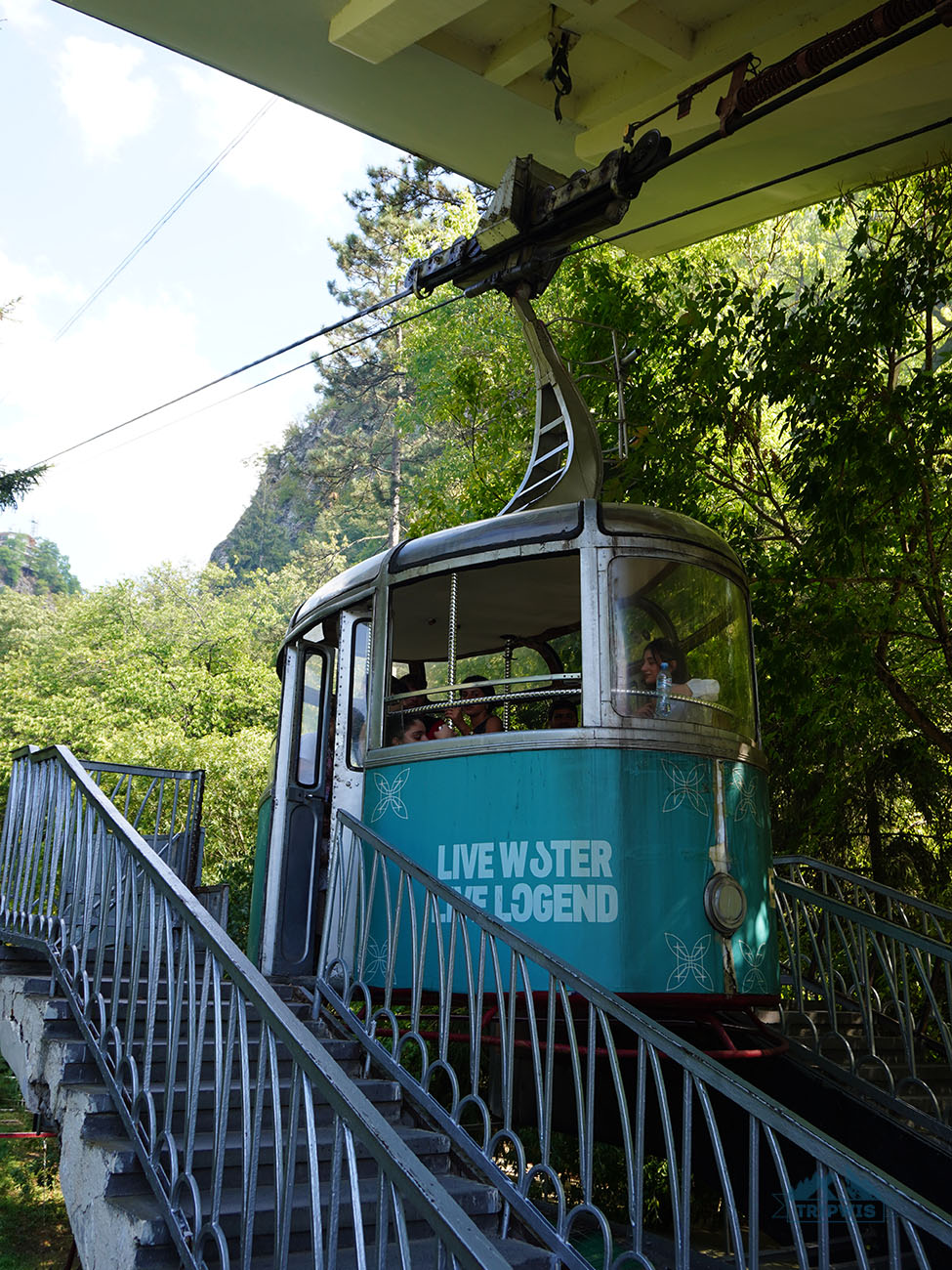 |
🔹Three words about this trip: Pools, castle & caves
🔹Distance from Tbilisi: 160 km / 99 mi to Borjomi, 220 km / 136 mi to Vardzia
🔹Time in transit (one-way): 2,5 hours to Borjomi, 4 hours to Vardzia
🔹Best way to get here: Car rental / guided tour
🔹Can you combine it with smth else: Kutaisi (#6) if you skip Vardzia
As the line from the old Soviet movie goes, “It is too late to drink Borjomi when your kidneys have failed”, meaning that a situation is completely beyond repair. Thankfully, when traveling, it is easy to turn any bad itinerary around by one simple daytrip.
People say that it is always a good idea to embark on a day tour from Tbilisi to Borjomi and the adjacent landmarks of Akhaltsikhe and Vardzia. All of the destinations top the lists of the best places to visit in Georgia.
Our opinion: Vardzia is generally the same thing as Uplistsikhe — both are cave dwellings. Second one is older but smaller, and closer to Tbilisi. First one is more remote but more entertaining and “mystical”. Is there any point in visiting both cave cities? We don’t think so…
Anyway, Borjomi is the first stop of this itinerary, so it’s only fair to sing praises to it first. You’ve heard of it before — the water that comes from the location’s mineral springs has been a world-wide phenomenon for ages now. It is an acquired taste, that’s for sure: A little sulfury, with hints of salt and metal. Once bottled and refrigerated, it goes down easy but drink it straight from the source and you’re in for a wild ride! The water is good for you though, so plug your nose and down the hatch it goes.
The resort town of Borjomi, nestled among the verdant mountainous ridges, is both tony and haphazard. The neat streets where the aristocrats have rendezvoused for centuries evoke the feeling of luxury and nobility, while the more removed areas can only be described as Soviet-era ruins.
Still, it is a pleasure exploring both Borjomi and the next stops of your road trip, as the itinerary is filled with sites:
- Borjomi Central Park — Gan expansive park with manicured grounds, mineral water springs, and open-air thermal pools which take 40 minutes of walk from the park entrance. The park entry costs 5 GEL, same as thermal pool access. But if you’re staying at one of the hotels in Borjomi, then the entrance fee is waived.
- Cold Borjomi source — located near Crowne Plaza Hotel and open to everyone, this source is much more pleasant to drink than the warm one in the park!
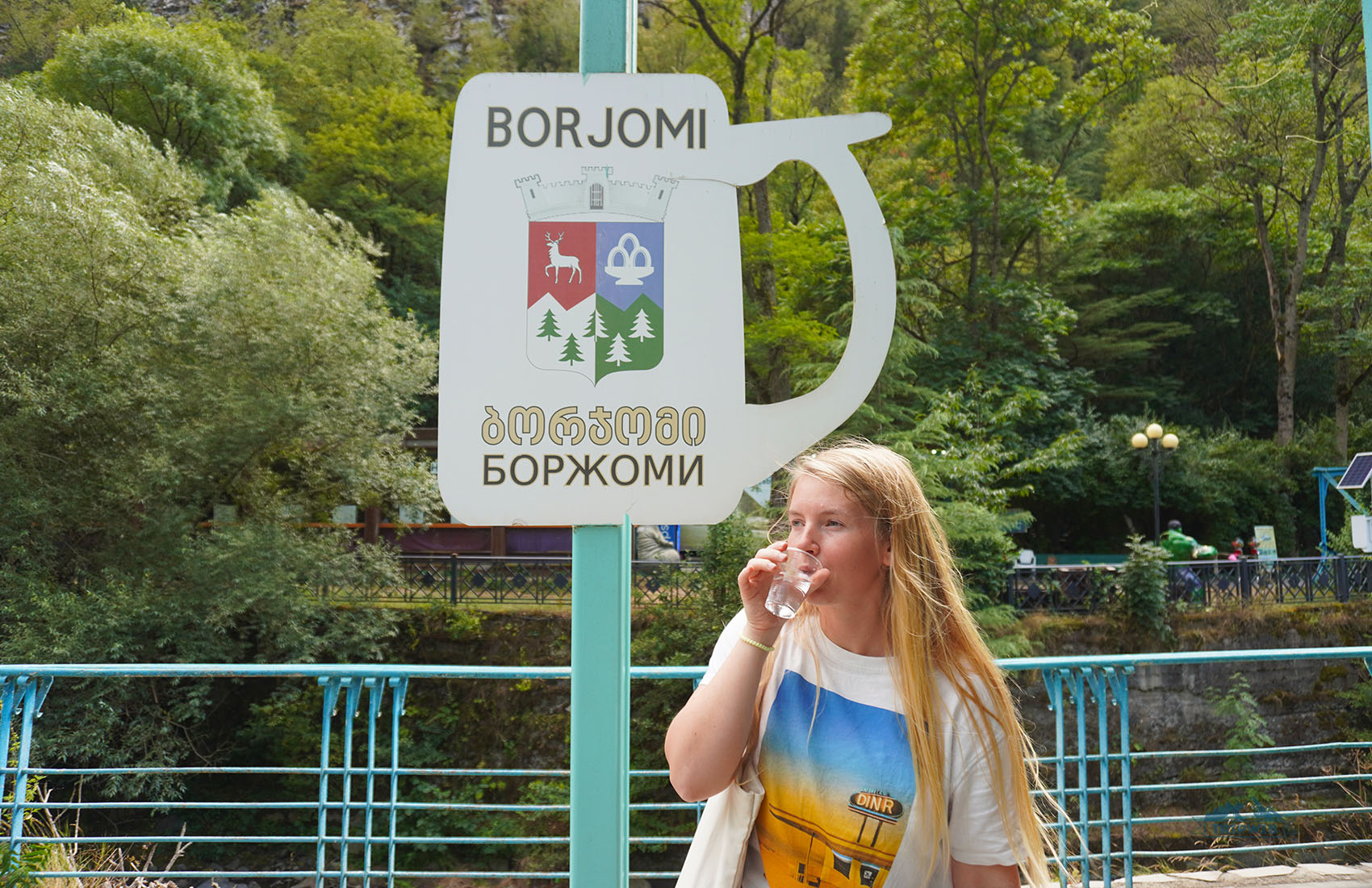
One hour further from Borjomi, and you’re in Akhaltsikhe. Rabati Castle is the main attraction of this small town, and it is very hard to miss. The castle covers much ground, with many structures forming the complex. The overall style of the buildings is not uniform: You can clearly see both traditional Georgian and foreign Ottoman influences (peep the golden dome of the mosque glistening in the sun). After a recent restoration in 2012, the castle grounds are new and improved: The territory is well-kept with multiple fountains, green areas, and walls and towers to scale for amazing views of Akhaltsikhe. The entry fee to Rabati Castle is 20 GEL / $7,5.
An hour and a half more, you finally get to Vardzia — the last stop of your current daytrip itinerary. It is an impressive cave monastery site with stunning frescoes. The etymology of the site’s name has its own legend: When the monastery was still under construction, Queen Tamar and her uncle were exploring the caves; Tamar got lost, and when the uncle called out to her, she replied with “Ak var, dzia”, or “I’m here, uncle!”. The entry to this curious historical site is 15 GEL / $5,6, but we would recommend paying 15 GEL more for the audio guide — that way, you’ll learn even more interesting and fun titbits about Vardzia.
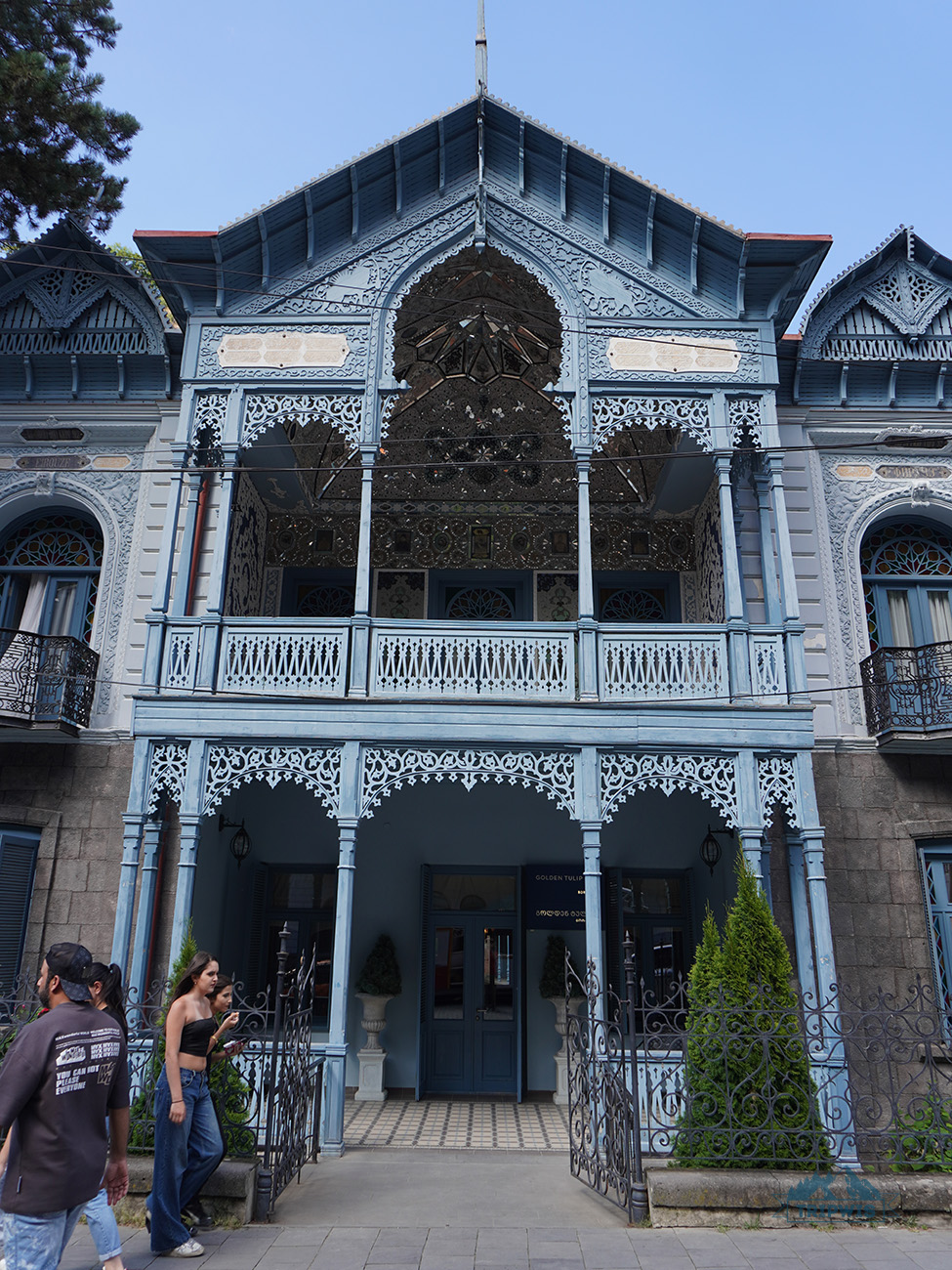 |
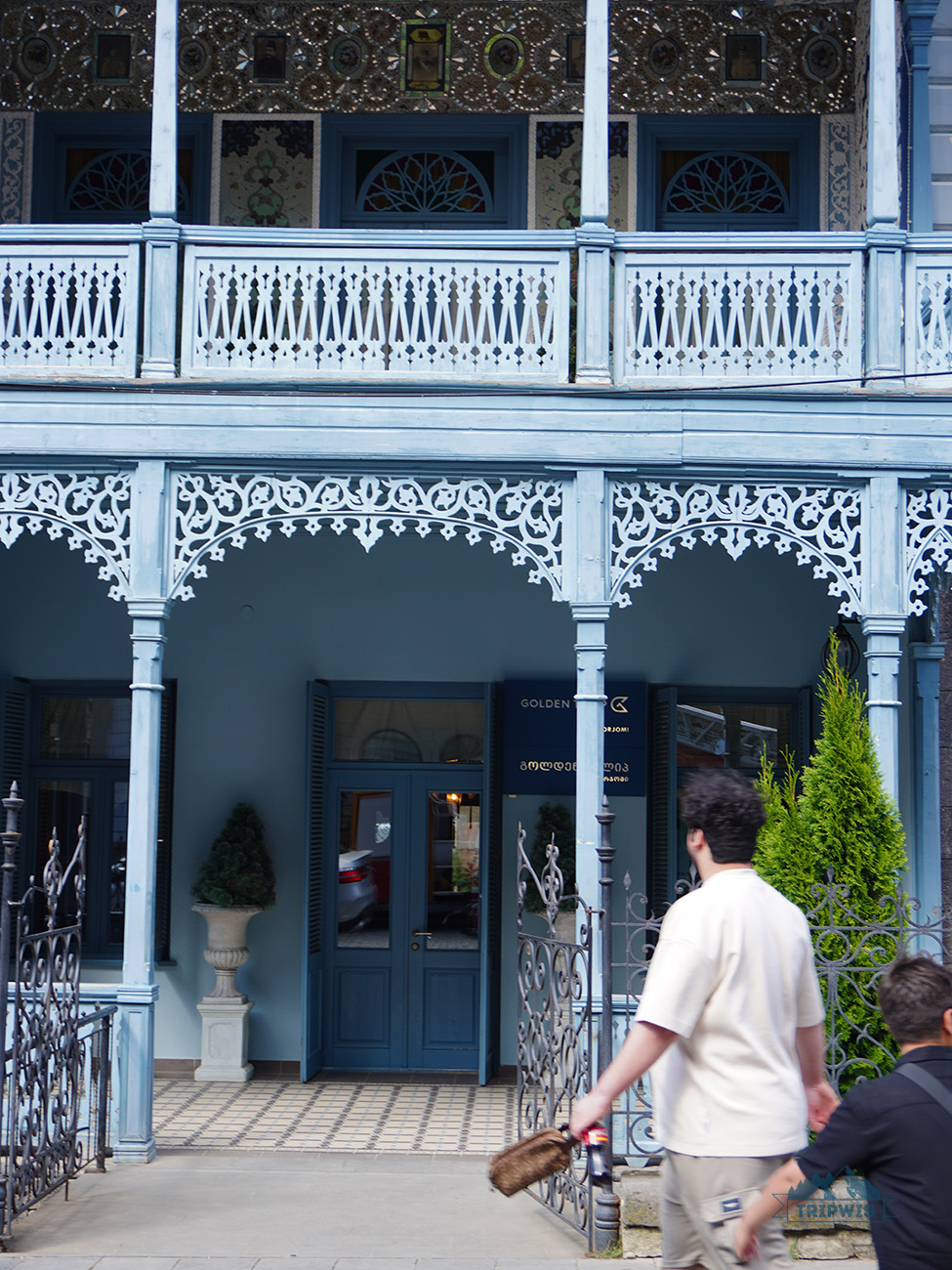 |
Visiting Borjomi, Akhaltsikhe, and Vardzia is on the list of easily done day trips from Tbilisi by car. Your own ride makes the trip super flexible. Keep in mind that this will likely be a full-day affair, so you have to leave early in the morning to make it happen.
The alternative is a guided tour for $42 per person, which usually includes all of the aforementioned sites. Public transport options are also available, but you will have to split the trip into several days and waste time on finding transfers between the stops.
If you want to challenge your patience in marshrutkas (and there’s no direct one to get there), then here’s your itinerary: A marshrutka from Tbilisi to Borjomi (12 GEL), a marshrutka from Borjomi to Akhaltsikhe (5 GEL), a marshrutka from Akhaltsikhe to Vardzia (8 GEL). And aaall the way back Of course, it’s not possible to pull it off in 1 day.
Side note: Huge traffic jam is inevitable on the way into Borjomi. One lane road, plenty of trucks (as the border with Turkey is close), and a constant stream of cars.
Where to stay?
- 4* Golden Tulip Borjomi (Borjomi; from $130 a night) — I’d love to spend a night in the interiors of this historical building! It’s the one on the picture above.
- Mimino Guesthouse (Akhaltsikhe; from $15 a night) — from one side, there’s a bus station. From the other, Rabati Castle. Perfect!
6. Kutaisi — to explore the Imereti region
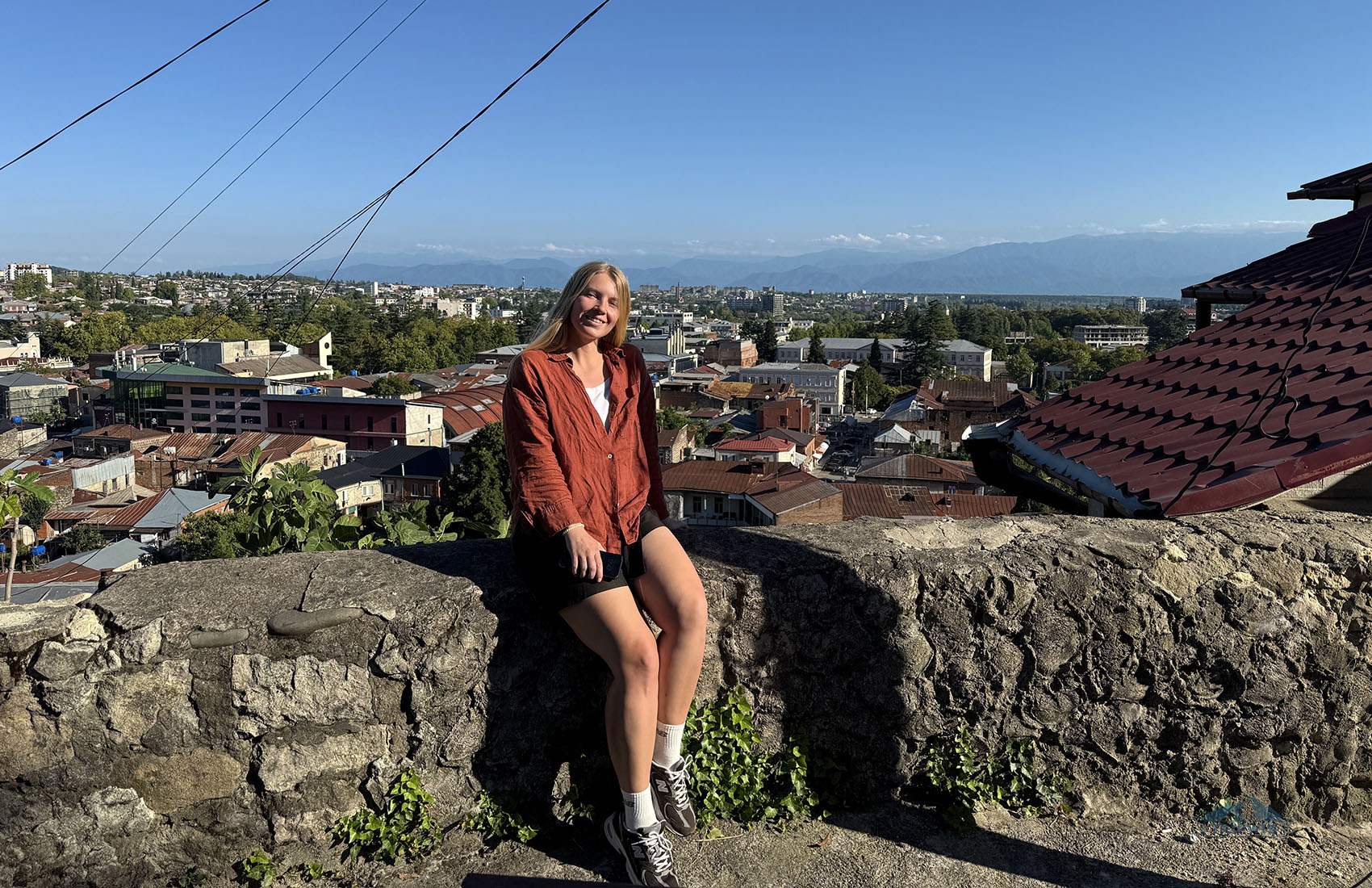
🔹Three words about this trip: Canyons & real caves
🔹Distance from Tbilisi: 220 km / 138 mi
🔹Time in transit (one-way): 3 hours
🔹Best way to get here: Car rental / guided tour
🔹Can you combine it with smth else: Borjomi without Vardzia (#5), Mtskheta (#2) or Gori and Uplistsikhe (#4)
Kutaisi is a great point for several things to see in Georgia outside of Tbilisi. It can be explored on its own in 1 day, or made into a fun detour on your way from Tbilisi to Batumi. The town is very old — legend says it is directly connected to the myth of Jason and the Argonauts! Kutaisi (or Colchis, as it was named back then) was the place they traveled to retrieve the Golden Fleece.
❗️If you’re determined to see the Imereti region in one day, departing from Tbilisi, then you need, first, a car and, second, a very clear plan and a strict schedule, because it’s relatively great distances from the capital.
I suggest you follow our Kutaisi day trip itinerary:
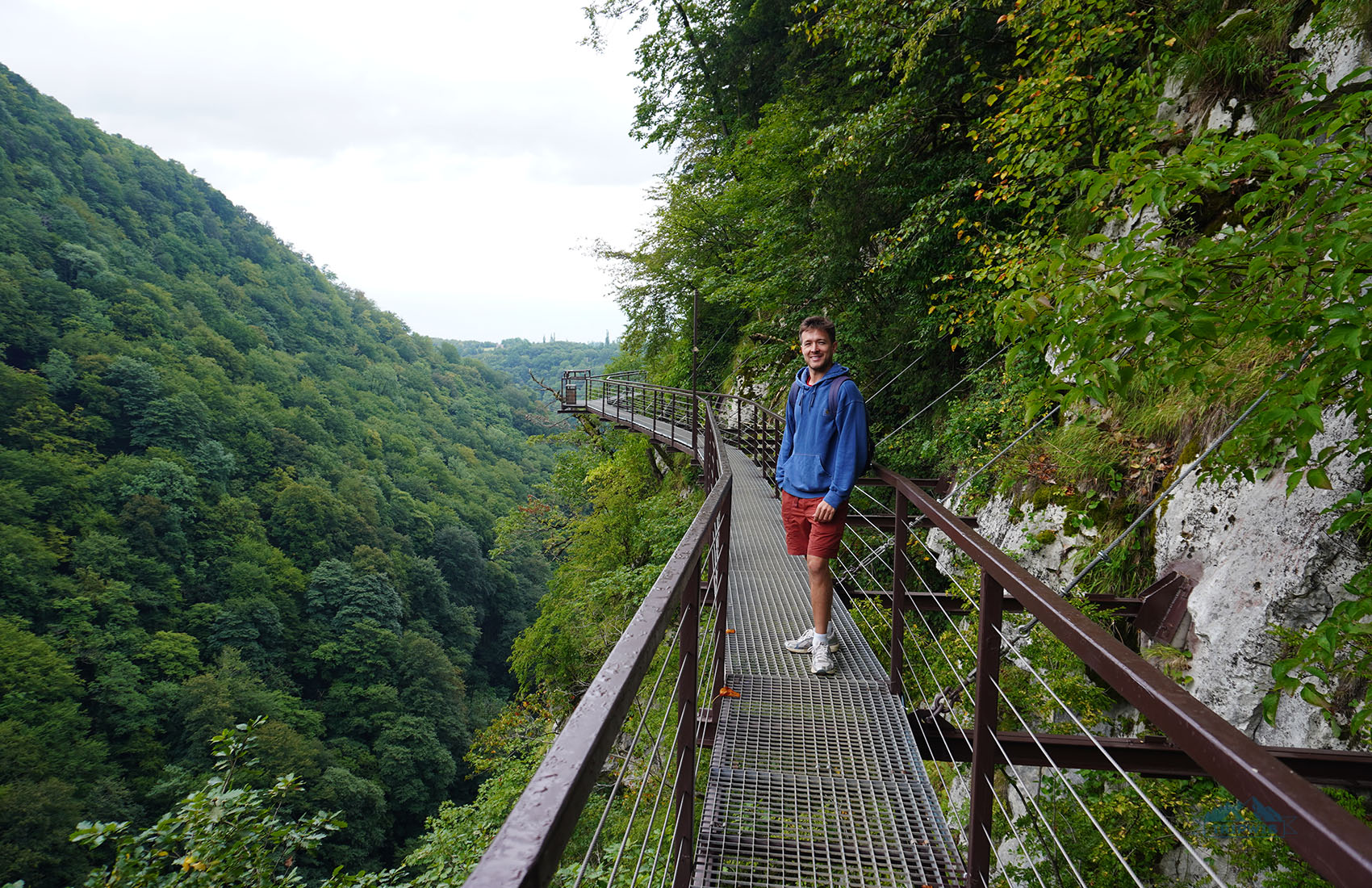
Leave Tbilisi as early as 6 a.m. and go straight to Tskaltubo — an abandoned resort town with delipidated Soviet spa and recreational facilities aplenty. It’s almost a ghost town that holds many relics, a visit here is bound to leave you with a lasting impression.
Be at Okatse Canyon Visitor Center at opening time (near 10 a.m.). It’s a destination worthy of the most adventurous and intrepid travelers (and, of course, your good old nature lovers). A suspended walkway will give you a chance to admire the never-before-seen panoramas, but it also will scare the crap out of you, especially if heights are not your favorite thing in the world! An opportunity to immerse yourself in this roller coaster of emotions costs just under 18 GEL / $6,7.
Side note: The visitor center is 3 kilometers away from the entrance to the canyon. Local taxi drivers will tell you that you either walk this distance or hire them for 70–100 GEL / $26–$37 as there’s no road. Don’t listen to them — there IS a paved road. Narrow and with one steep ascent, but it’s there! A regular car will do just fine (our Toyota CH-R did!).
Prometheus Cave — yet another major tourist attraction in the region, the cave is a truly magical place. The legend says that’s where Prometheus was chained for giving the humans the secret of fire making. And when you’re sitting in a boat that floats along the underground river, it’s easy to imagine that actually being the case. The karst cave walls feel ancient, they’re steeped with so much history it’s almost palpable to the touch. My advice is not to cling to the group (entry is only allowed in groups) and just enjoy the place quietly from behind everyone else. The ticket costs 25 GEL / $9,3 + 20 GEL / $7,5 for a boat ride, if you want.
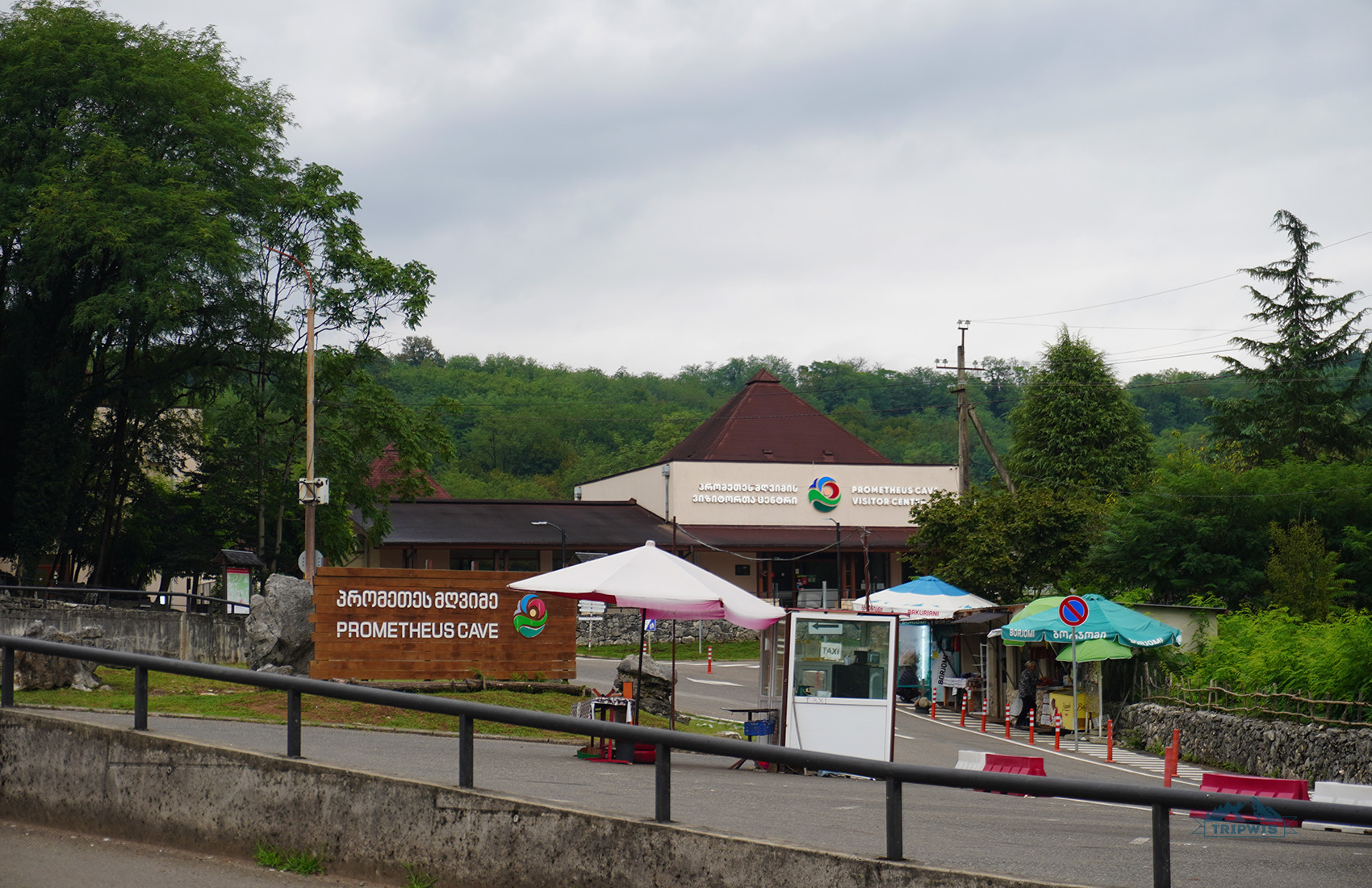
After that you have some time for the city of Kutaisi. Despite being Georgia’s third-largest city, it probably won’t impress you with the number of “wow!” places.
- Bagrati Cathedral (within the city), Gelati Monastery, and Motsameta Monastery (both outside the city) — ancient churches, each more exciting and educational than the last. Bagrati and Gelati even made it onto the UNESCO World Heritage list but the first one was removed later because they got carried away with the restoration.
- Kutaisi’s town center — from which I want to mention the unique Colchis Fountain (adorned with golden replicas of some jewelry found at the nearby archeological site) and the beautiful sculptures on the facade of Green Bazaar.
On the way back to Tbilisi, drop by Katskhi Pillar, if you still have time or energy to explore the region around Kutaisi. This distant small church sits atop a pillar-looking rock! The reason for the church being so high (ensuring that every monk’s ascent and descent be nerve-wracking and death-defying) is the drive to be closer to God. As Dolly Parton would suggest, they could’ve just made their hair bigger — no need for such extremes!
The most convenient and budget way to travel to Kutaisi is by train. It leaves Tbilisi once in the morning and costs around 13 GEL / $4,8. No worries if you missed it though — frequent marshrutkas for 20 GEL / $7,5 depart from the Didube bus station. But I have to say a long ride in a crowded marshrutka on a winding mountain road may not sound like the best idea.
Various tours from Tbilisi are also available. If you combine your trip to Imereti with a visit to Batumi, it may be the best weekend trip from Tbilisi.
Where to stay in Kutaisi?
- 3* Communal Hotel Kutaisi (from $130 a night) — Rooms hotel chain hasn’t yet made its way to Kutaisi but Communal’s already here!
- Garden rooms Kutaisi (from $55 a night) — our choice for one of the trips to Kutaisi. A spacious, clean, and cozy cabin close to Bagrati Cathedral.
7. Udzo Monastery — to do a hike within Tbilisi
🔹Three words about this trip: Lake, tower & monastery
🔹Distance: 8 km / 5 mi
🔹Time in transit (one-way): 2 hours
🔹Best way to get here: Hike or bike
Can a hike be classified as a day trip? Sure it can, especially if it has a few exciting stops along the way, where one can spend hours admiring or learning more about culture and traditions of the land in question. That is why a hike to Udzo Monastery from Tbilisi is a perfect detour — the trek to the church is only 8 km from the capital, but it packs so much substance into the adventure that it’s hard to pass up on the opportunity.
You can choose among three main trails, with each having a different itinerary and levels of physical fitness required. All in all, I believe that hiking along a lovely terrain (ducking in and out of the forests, with scenery constantly changing) to your destination is a much better use of your time than being cooped up in a stuffy marshrutka for hours. So, what can you see on this hike?
- The trail starts in the outskirts of Tbilisi at Turtle Lake — a popular place among locals to swim and sunbathe on the weekends.
- Svan Tower — an amazing viewpoint of the lake and Tbilisi. To get to the top, you have to find a hole in the fence. If it is closed, do not worry — you will pass through other spots to enjoy the views later on.
- Udzo Monastery — your final destination. This monastery has a sweet story of its conception: It is said that a childless man erected the monastery atop of the mountain (at 1,416 meters above sea level, the mount was also named Udzo later on) while continuously praying for a child. His wish came true, and now childless men and women make the pilgrimage to this remote place of worship in hopes that their prayers will also be heard. Though the complex is near Tbilisi, it is not a very popular place with tourists, which makes it a great spot to take a break from the city.
When it comes to particular directions, my advice is to start in Vake Park, from where you can take a cable car to Turtle Lake for only 1 GEL (one-way fee).
Keep in mind that you need a bottle of water and some snacks for this hike — there are no water springs or food kiosks along the way. If you get tired, you can grab a taxi back to the city from the monastery. You may encounter some bikers on the trail — this is also a popular biking route. If you do not mind pedaling yourself, mountain bike rental is available at bikes.ge from 10 GEL/hour or 50 GEL/day. Before you worry: Yes, it is possible to take the bike on a cable car.
8. Armenia — to cross the border and peek inside
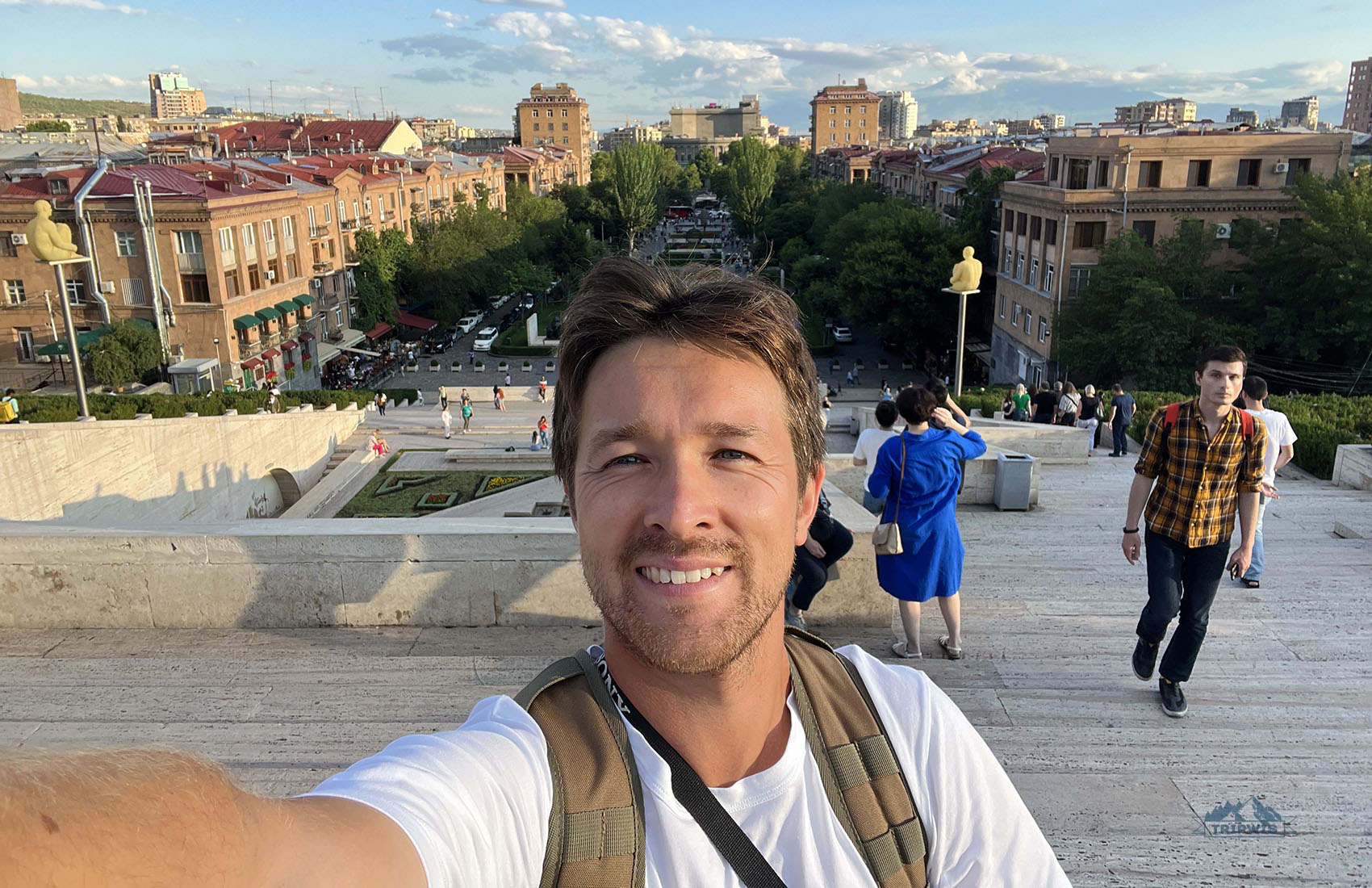
🔹Three words about this trip: Armenian UNESCO monasteries
🔹Distance from Tbilisi: 120 km / 75 mi
🔹Time in transit (one-way): 2,5 hours
🔹Best way to get here: Guided tour
🔹Can you combine it with smth else: Mmm…not really
Armenia might look like an odd one out on the list of the best places to visit from Tbilisi. It is another country altogether — how is it necessarily daytrip material? Well, the distance of 100 km seals the deal: It is reasonable enough to consider exploring another country during your visit to Georgia. And what a unique place you’ll discover!
The nature and general scenery — the domineering mountains flanked by soviet-era brutalist housing blocks — are contrasting enough to create a memorable sight. Add to that important religious landmarks (Armenia was the first nation to make Christianity its state religion) and a culinary scene and you have yourself a complex, layered, and incredibly beautiful destination for a short adventure. All you need to do to witness it is book a tour (preferably), get a passport stamp at the border, and relax.
Given the limited time you’re likely to have in the country, it’s important to pick and choose the sites most worthy of your time. For one day, it would be:
- Sanahin, Haghpat and Akhtala monasteries — the finest examples of medieval architecture and great spots for the views of the Caucasus Mountains. Sanahin and Haghpat are two UNESCO-protected sites waiting just across the border — all of the structures in the monastic complexes are surprisingly intact. No earthquake or foreign invasion succeeded in demolishing these valued historical sites. Akhtala Monastery, though lacking UNESCO-given title, is still an amazing destination — this place of worship has a few of the most well-preserved frescoes in the entire country.
If you want to visit Yerevan, Dilijan National Park (the ultimate nature destination for locals and country visitors alike), Lake Sevan (Armenia’s largest body of water), this deserves more than just 1 day and probably a separate post on our blog!
To enter Armenia, you have to prepare for border crossing procedures. Visa is not required for the citizens of most of the European countries and the USA, thus making Armenia one of the easiest countries to visit (compared to, say, the neighboring Azerbaijan).
The border crossing usually takes about 30–60 minutes depending on the traffic situation (Bagratashen – Sadakhlo is the most popular crossing, as it sits on the main road between Tbilisi and Yerevan).
It is possible to travel to Armenia by marshrutka (50 GEL / $18,5) from Avlabari metro station (the minibuses run every couple of hours, between 9 a.m. and 5 p.m.), but it goes straight to Yerevan. Similarly, you will not be able to check out any of the sites located in the countryside by taking the overnight train (90 GEL / $33,3).
That is why the easiest way to make one of the best side trips from Tbilisi happen is to take a guided tour to Armenia. This one (from $80 per person) is your best bet — the raving reviews speak for themselves!
9. Batumi — to try the best Adjarian khachapuri
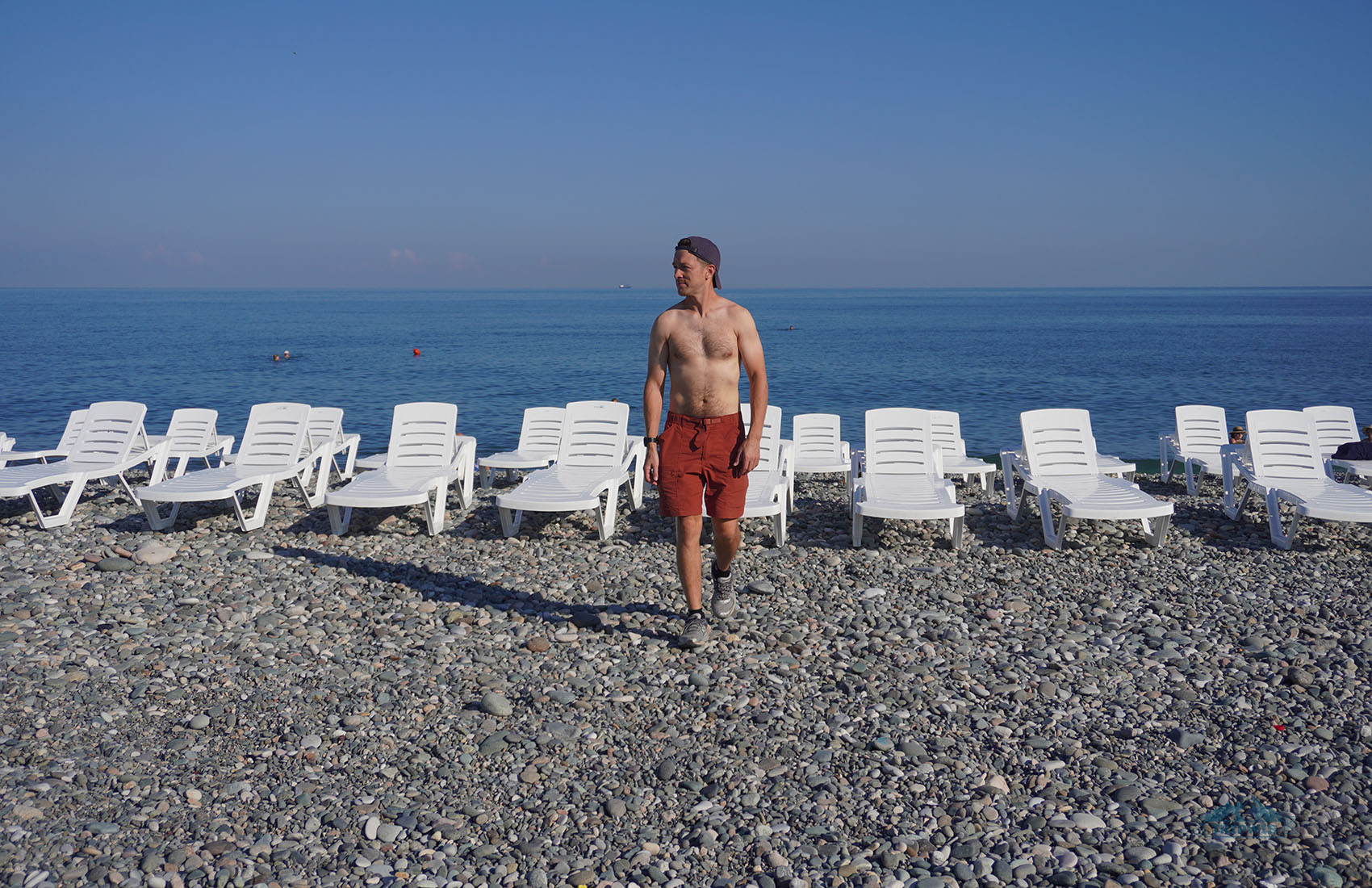
🔹Three words about this trip: Seaside & Adjarian khachapuri
🔹Distance from Tbilisi: 350 km / 217 mi
🔹Time in transit (one-way): 5–6 hours
🔹Best way to get here: Train / car rental
🔹Can you combine it with smth else: Anything from this list except Kakheti, Georgian Military Highway, Armenia, and Rustavi
There’s absolutely no way you can make a day trip from Tbilisi to Batumi. 375 kilometers is already a lot, and add the heavy traffic near the seaside, and it turns into a real challenge. But if you have enough time on your hands, traveling to Batumi may be one of the best weekend trips from Tbilisi in Georgia.
Batumi undergoes the same high season influx of tourists as the rest of Georgia — but turned to the absolute max. You should really reconsider your vacation plans if your holiday falls on the months of July and August — that’s when the waterfront gets super crowded and Batumi starts bursting at the seams. From my personal experience, I can say that the city’s infrastructure wasn’t designed to comfortably accommodate such crazy flood of visitors.
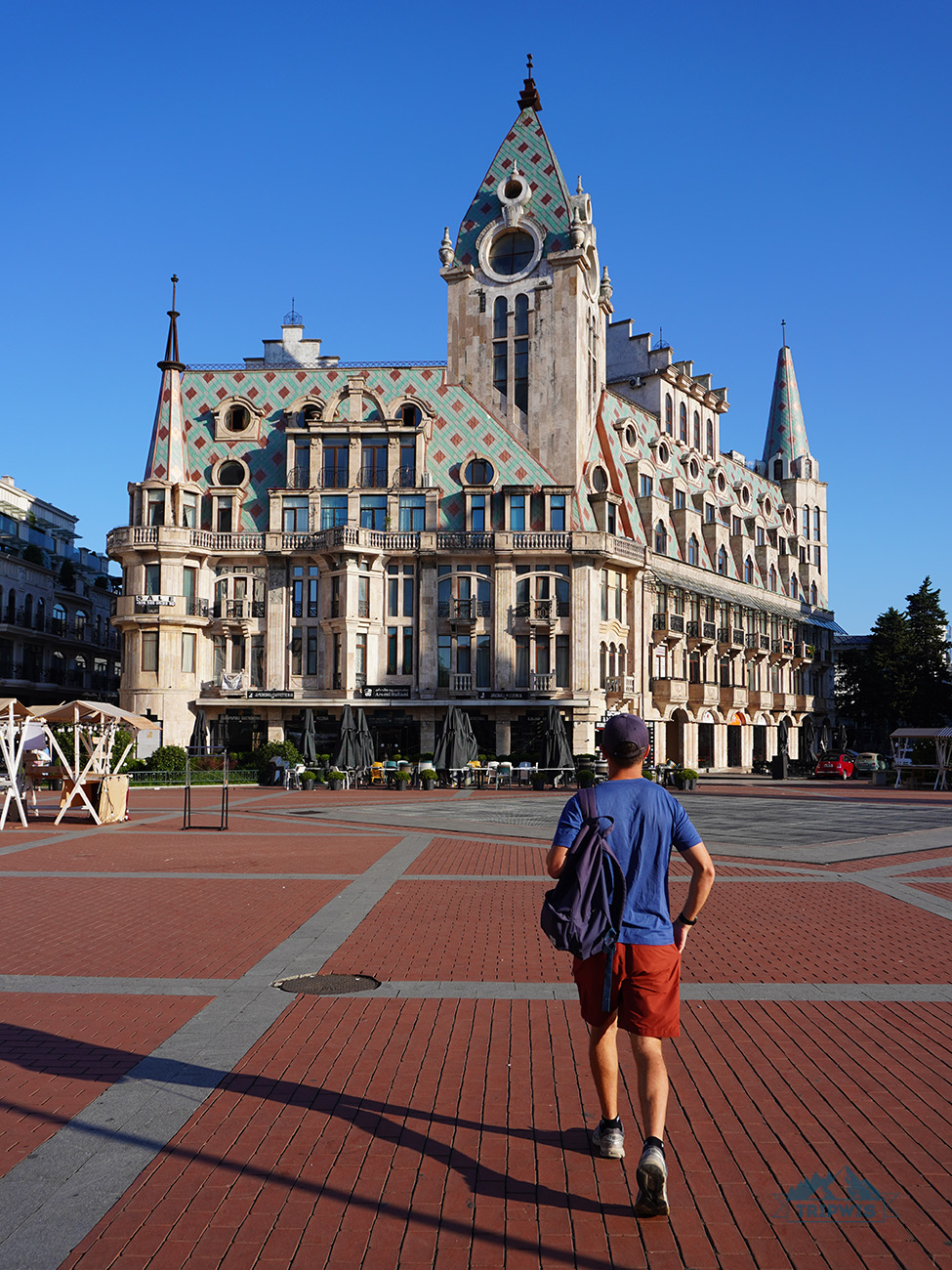 |
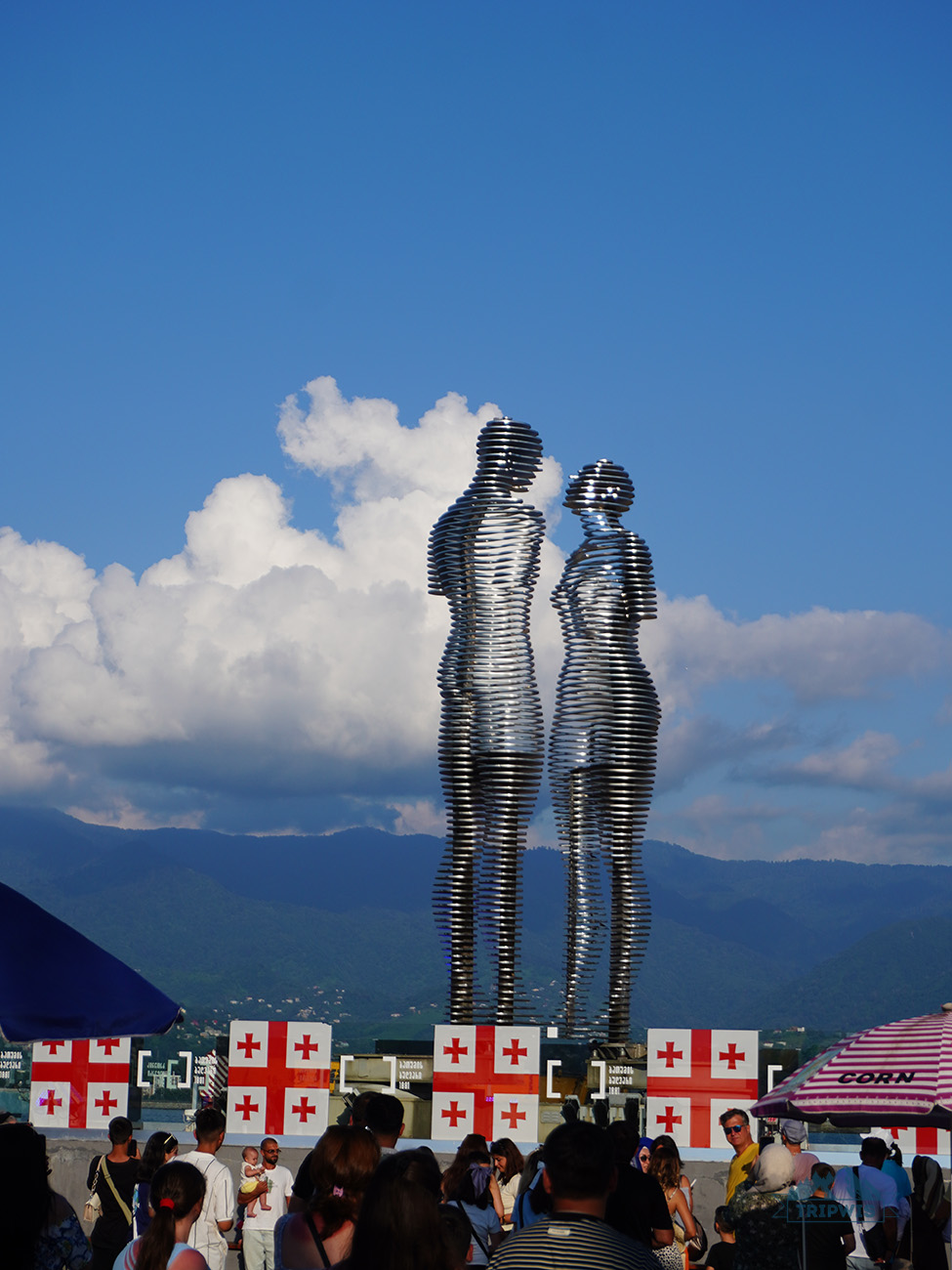 |
Besides the huge perk of easy access to the sea granting the city a title of an ultimate beach vacation destination in Georgia, Batumi has some remarkable suggestions for sightseeing. Major tourist attractions here are:
Batumi Boulevard — this seven-kilometer stretch of the waterfront promenade has all the necessary infrastructure: From jogging paths to a myriad of cafes and restaurants, the verdant seaside park attracts thousands of flaneurs and simple holidaymakers daily. The boulevard also has plenty of unique sculptures and monuments to catch your attention:
- Ali & Nino Statue — one of the most well-known sculptures, this moving art piece was originally created for the Venice Biennale. The kinetic sculpture showcases a man and a woman that move towards — and then through — each other, in a never-ending loop.
- The Alphabetic Tower — another monument located within Batumi Boulevard. A 130-meter tower has a DNA shape, with Georgian alphabet letters running alongside the double helix. The tower is a testament to the Georgian alphabet — one of the most mesmerizing writing systems in the world. It is not derived from any other alphabet — the 33 letters it is comprised of are completely distinct, independent from outside influence. If you’re not moved by this particular fact, that’s fine: I think only linguists can geek out on such a detail!
Batumi Botanical Garden — a calming respite for any nature lover. Home to countless of unique plants, the Garden is beautiful year-round, but has a particular allure in the spring. The sheer variety of flora specimen at the Garden is mind-blowing: From roses and camellias to bamboo shoots and sakura, — tramping amongst the verdant vegetation in Batumi is like traveling from one eco-system to the other. A ticket to the Garden costs 20 GEL / $7,5; a fair price considering tons of memories (and pictures) you’ll amass by the end of your visit.
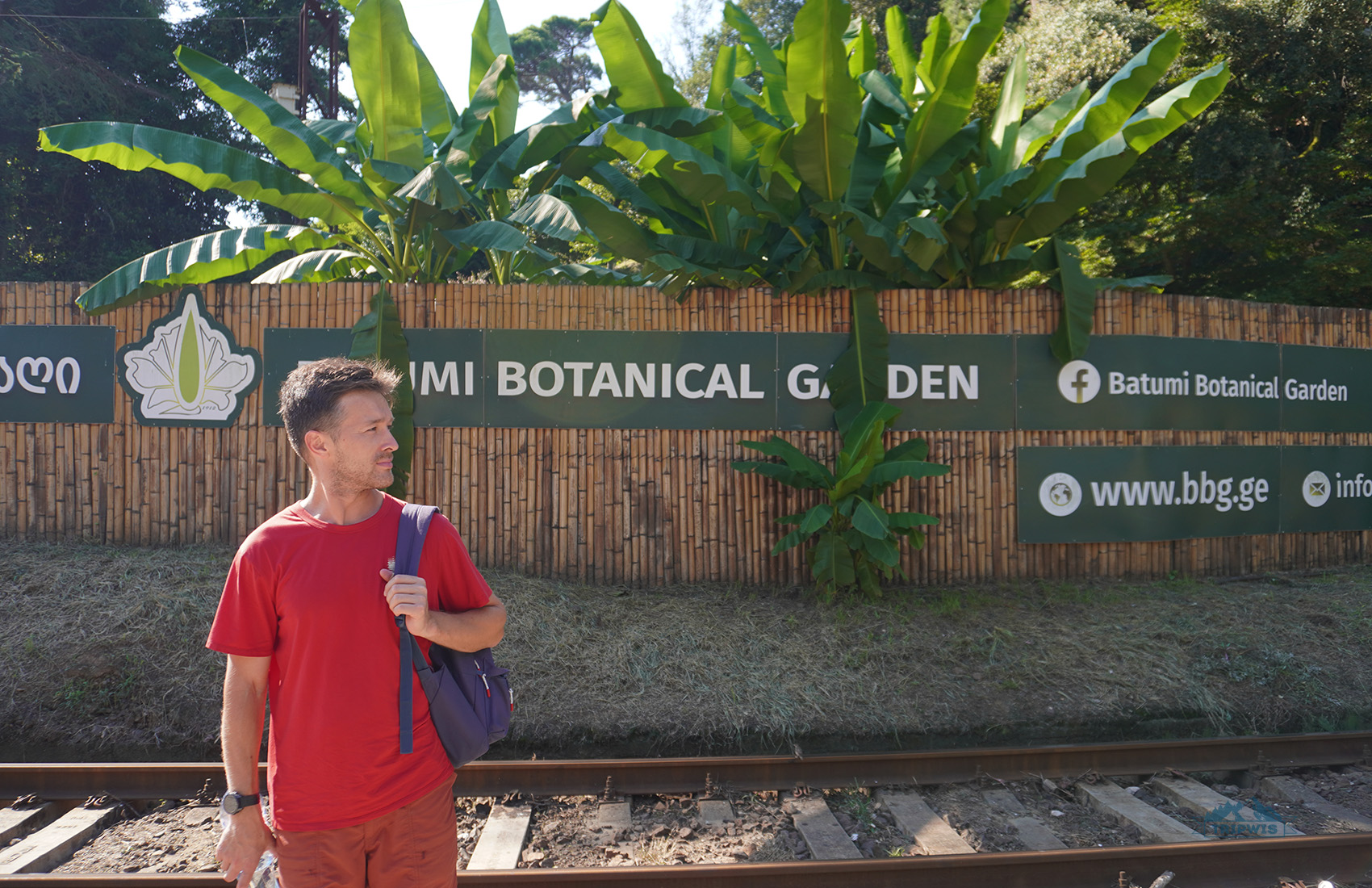
Laguna — they say that this gastronomic Batumi darling serves the best Adjarian khachapuri (a cheese bread boat with butter and egg on top) in the city. It’s good, indeed, but have you tried one at Shemoikhede Genatsvale?
The fastest and easiest way to get to Batumi, besides car, is by train. It costs 35 GEL / $13 one-way and reaches the destination in under six hours. The tickets can be bought online via the official website of the Georgian Railway company.
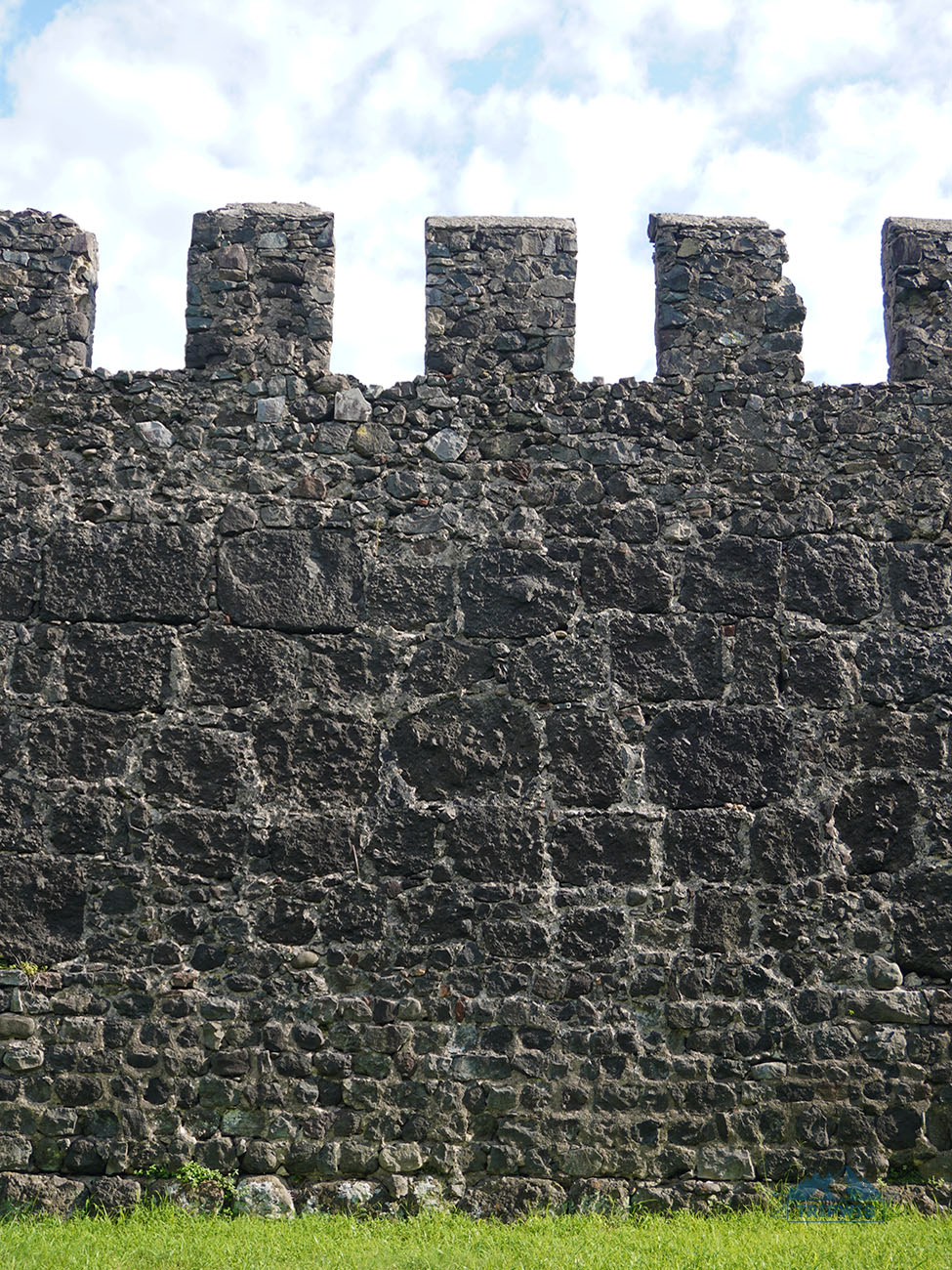 |
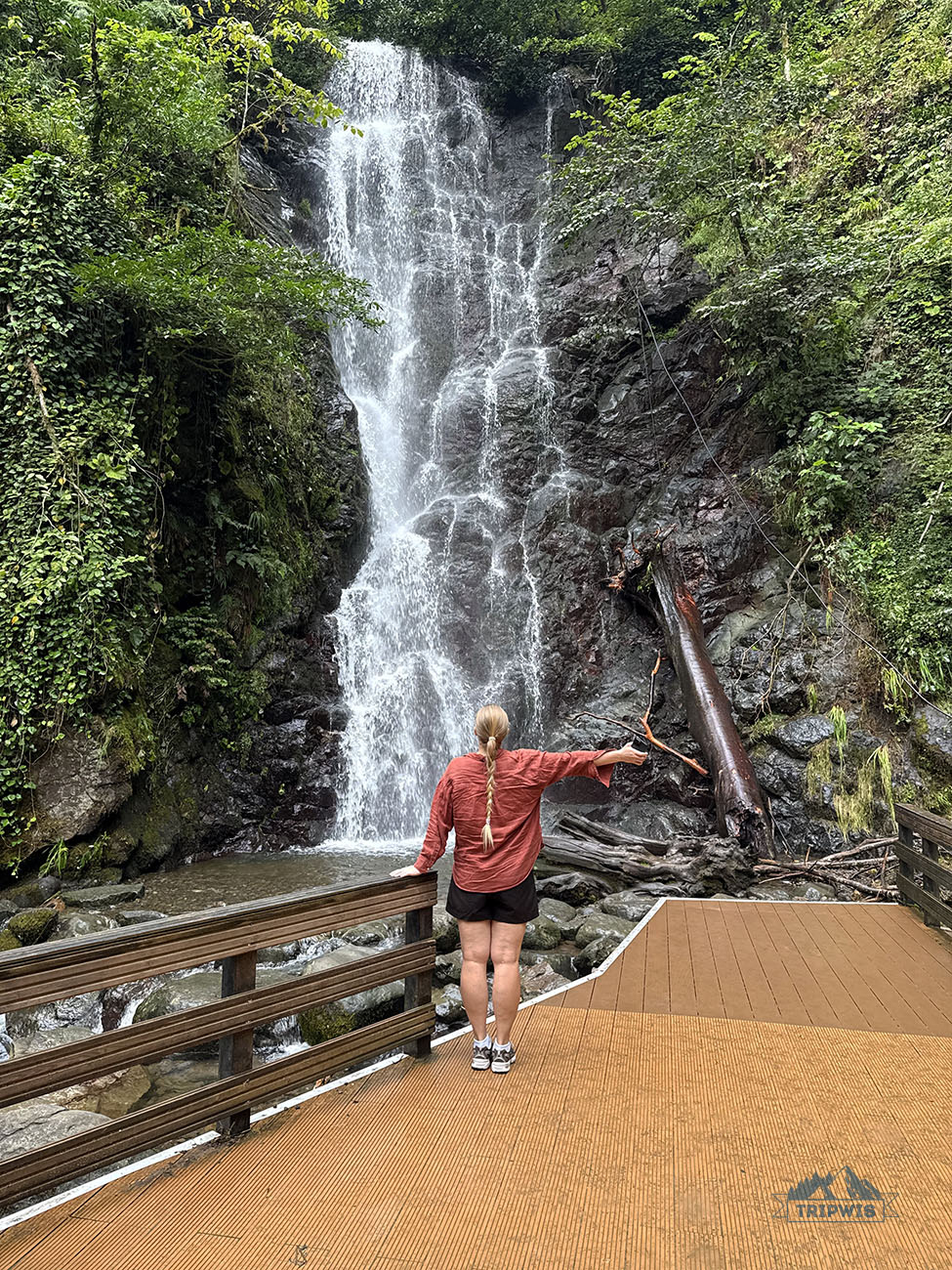 |
If your day trip to Batumi falls on summer months, then you have to be more proactive in your planning — get the tickets well in advance, since all of them sell out much faster for the months of July and August. If you failed to secure the train ticket, then your best budget picks are a marshrutka for the same price from Didube bus station or a more comfortable bus from Ortachala terminal.
Where to stay in Batumi?
Note that hotels in Batumi are pretty expensive for Georgia, especially from May to September — you might want to check out more budget-friendly aparthotels first.
 |
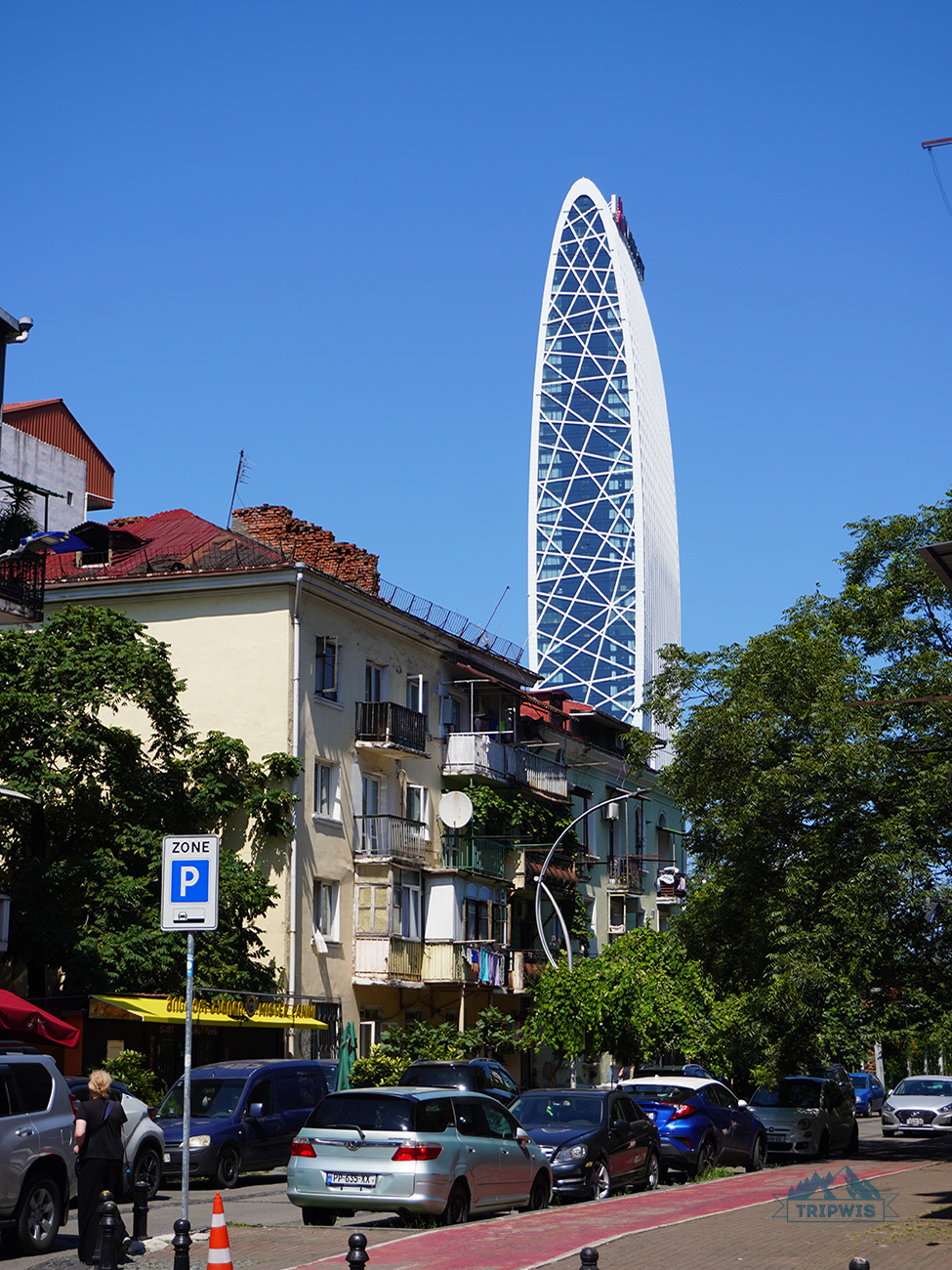 |
However, treating yourself is also an option: You only live once, so put your money where you can see it — into booking a lavish suite for your coastal Georgian getaway. That’s what we thought and reserved a room at:
- 5* Courtyard by Marriott Batumi (from $150 a night) — I was won over by the beach across the road, the spa overlooking the sea, and a FREE parking for the guests. What a headache it is to find a spot for your car in Batumi!
- 4* Piazza Epigraph (from $115 a night) — I really liked the modern design of this hotel amidst the historic district. I’d love to stay there next time in Batumi.
- 2* Batumi Surf Hostel (from $11 a night) — a hostel smack in the middle of the Old Town and near great coffee shops (namely Fox and Nord).
10. Rustavi — to look at the Soviet architecture
🔹Three words about this trip: Motorpark & Soviet architecture
🔹Distance from Tbilisi: 35 km / 22 mi
🔹Time in transit (one-way): 1 hour
🔹Best way to get here: Marshrutka
If you are wondering what cities are close to Tbilisi, Rustavi is your answer — it is located only 35 kilometers southeast of the capital. When I first heard of Rustavi, what I expected to find was a city frozen in a Soviet-era state, with grey residential blocks and factory smog messing with the panorama.
But Rustavi turned out to be completely different: Though remembering and acknowledging its past (after all, the brutalist apartment blocks are still lived in), the city is moving into a brighter future — the one where dominating similar micro districts are getting a clean coat of paint and a few coffee shops for good measure, and where old Soviet mosaics sit shoulder to shoulder with modern graffiti. Of course, the label of a Soviet-era open-air museum stuck to Rustavi like a shadow. It is one of the most well-known places in the country to admire Soviet architecture.
What to see when you’ve made the drive to Rustavi:
- Rustavi Metallurgical Plant — a reason for the city’s Soviet-era existence, this (still operational) plant is a spectacular specimen of the style of architecture of the past. Mostly functional buildings are abound, but the main structure has an ornate bas-relief with industrial motifs.
- Rustavi Cross — a steel cross set atop the hill overlooking the city, erected in honor of the industry that created Rustavi itself.
- Rustavi International Motorpark — an only (and thus, primary) international motor racing venue in Georgia. All of the events that interest race (and car) enthusiasts are held here — BMW or Mercedes owner meet ups, test drives, championships.
If you are looking for short trips from Tbilisi, this is one of your best picks. A short (one hour at the worst) ride in a marshrutka from the Didube bus station for only 3 GEL seems like a good idea. To save time, order a taxi from anywhere in Tbilisi (35 GEL / $13).
Side note: If you travel by car, you can make Rustavi a stop on your way to David Gareja Cave Monastery that is set in the Kakheti Region. It is a UNESCO-protected site that also reminded me so much of Cappadocia — if not for the cave churches, but for the arid terrain that surrounds the location. Know that the road here is not an easy one, so you will need a four-wheel drive to reach the destination.
My advice on day trips from Tbilisi
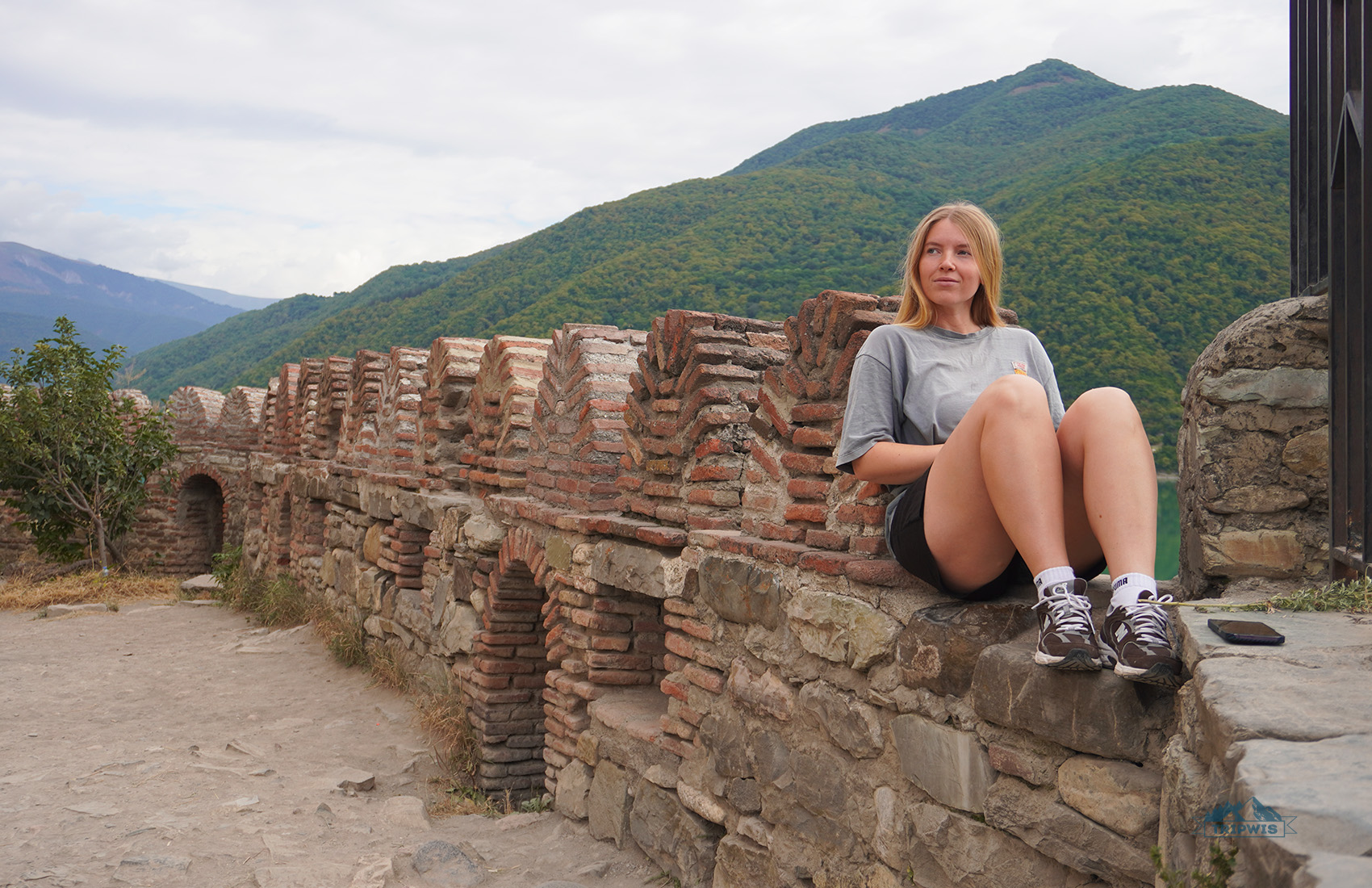
As I’ve already established, Tbilisi is a beautiful and interesting city to explore; but do try to make time for the rest of Georgia. Good location of the city makes it easy for a tourist to go on day trips in all directions — pick a side and you’ll bump into a cave city, an ancient monastery, or a boozy brunch at a winery.
Try to do as many detours as you can and share your experience in the comment section below (I really do want to hear all about your adventures!). For now, I’ll leave you with the essential tips about Tbilisi and also traveling around Georgia that I was adding to my Notes during our trip:
- When choosing a car to rent in Georgia, aim to book a vehicle no older than 3 years. Most of the cars here are pretty beaten up. Localrent service has such a filter (year of manufacture), and it can be really useful in Georgia.
- During the summer and till October-November, a regular compact car will get you anywhere you want. For the winter, it’s better to pick an SUV.
- Ditch Google Maps! They don’t work properly in Georgia. Use Organic Maps or Yandex Maps for navigation.
- Try not to drive after the sunset — there are lots of cows and dogs preferring to rest exactly on the roads.
- If you’re an eager time-saver, keep in mind traffic jams when approaching/getting out of Tbilisi.
- You can’t pay via bank card in marshrutkas. Cash only.
- Picking a good hotel WITH PARKING for a stay in Tbilisi is essential. Although the parking is paid almost anywhere in the city 24/7 (with a fixed rate of 1 hour = 1 GEL), these spots are often taken. We stayed at Rooms Tbilisi and Artizan Design hotels — both have a free underground parking for their guests.
- For interesting guided tours around Georgia, check out both GetYourGuide and Viator.
- Use Bolt or Yandex for fixed taxi rates.
- You will need good hiking footwear in many areas; as well as layers: A cave can be chilly, a mountain side can be windy, and a beach too sunny — your shirt can double as a headdress in critical situations.
- Magti roaming internet pack of unlimited data costs 20 GEL ($7,5) for a week or 45 GEL ($16,5) for a month — stay connected no matter where you are!
- Be careful on Georgian roads and always put a seat belt on. Reckless driving is a problem in Georgia.
- You should practice the same level of vigilance as a pedestrian — in Georgia, it’s better to be safe than sorry!
As you’re planning your Georgia adventure, make sure to use our map — it will make it easier to see clusters of destinations that could potentially be visited in one day. And have fun — the country’s welcoming nature and convivial atmosphere agree well with a pleasant trip, no matter which destinations you’ll end up crossing off your list.
